“How much filth there is in the Church, and even among those who, in the priesthood, ought to belong entirely to him!”
- Cardinal Josef Ratzinger, Stations of the Cross meditations for Pope John Paul II, Colliseum, Rome, March 25, 2005

“How much filth there is in the Church, and even among those who, in the priesthood, ought to belong entirely to him!”
- Cardinal Josef Ratzinger, Stations of the Cross meditations for Pope John Paul II, Colliseum, Rome, March 25, 2005

“The man who is now Pope reopened cases that had been closed; did more than anyone to process cases and hold abusers accountable; and became the first Pope to meet with victims.”
- William McGurn, columnist, The Wall Street Journal, on coverage of Pope Benedict by The New York Times, 6 April
2010

IS THERE A CASE?
TIM WALLACE investigates the remarkable paper trail of The New York Times’ allegations. How good was their reporting?
■ PAGES 4-5

THE ABUSE PANDEMIC
Statistics from the UN and World Health Organisation reveal an uncomfortable truth the media can’t seeand are possibly not interested in.
■ PAGES 8
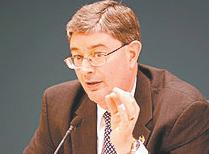
When journalists can’t - or don’t want - to report the facts, truth is not the only victim. People are too.
■ PAGES 10-11

APPALLED
Ed Koch, a Jew who was the Mayor of New York City, is appalled at the disintegration of The New York Times and its 'hit job' on Benedict.
■ PAGES 9






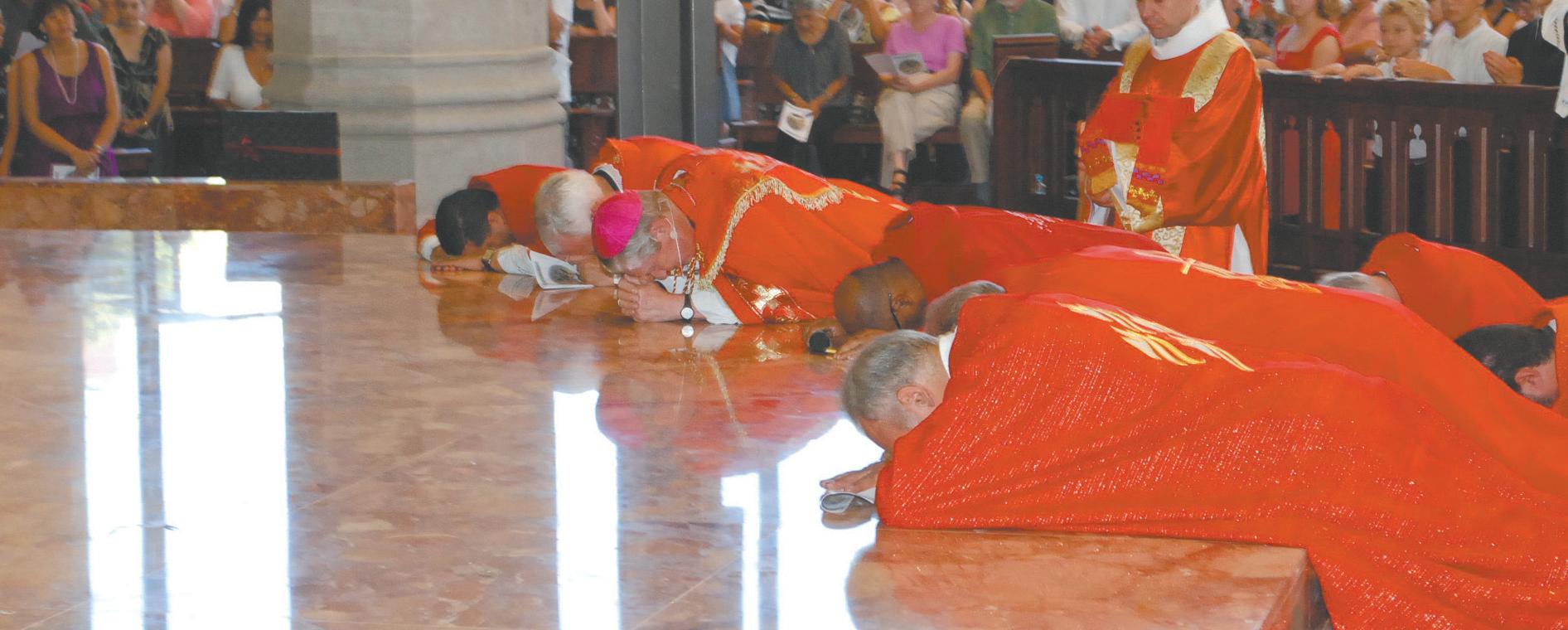 BY BRIDGET SPINKS ANTHONY BARICH
BY BRIDGET SPINKS ANTHONY BARICH


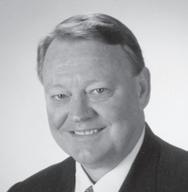
Editor
Peter Rosengren cathrec@iinet.net.au
Local News
Bridget Spinks baspinks@iinet.net.au
Mark Reidy reidyrec@iinet.net.au
National News
Anthony Barich abarich@therecord.com.au
Advertising/Production
Mat De Sousa production@therecord.com.au
Accounts
June Cowley recaccounts@iinet.net.au
Classifieds/Panoramas/Subscriptions
Bibiana Kwaramba administration@therecord.com.au
Record Bookshop bookshop@therecord.com.au
Proofreaders
Christine Jaques Eugen Mattes
Contributors
Debbie Warrier John Heard
Karen and Derek Boylen Anthony Paganoni CS Christopher West Catherine Parish
Bronia Karniewicz Fr John Flader
Guy Crouchback
The Record
PO Box 75
Leederville WA 6902
587 Newcastle Street, West Perth
Tel: (08) 9227 7080, Fax: (08) 9227 7087
Website: www.therecord.com.au
The Record is a weekly publication distributed throughout the parishes of the dioceses of Western Australia and by subscription. The Record is printed by Rural Press Printing Mandurah and distributed via Australia Post and CTI Couriers.
Perth Archbishop Barry Hickey openly confronted the child abuse scandal facing the Catholic Church by apologising to Easter congregations at St Mary’s Cathedral for the “terrible misdeeds” that “shame us all”.
Addressing a packed congregation during the first Easter ceremonies in the Cathedral since it was closed for renovation and completion at the end of 2006, the Archbishop also urged the congregation to pray for seminarians, that they will “determine never to give scandal to the Church” and for Pope Benedict XVI, “who is besieged ... who symbolises the frailty of the Church”.
He also asked the congregation to pray for the clerical leaders of the Church locally and abroad.
He said that child abuse is “something that should never ever happen among the Church”. “We are sorry and we apologise,” Archbishop Hickey, vice-president of the Australian Catholic Bishops Conference, said at the Easter Saturday Vigil Mass.
At the Easter Sunday Mass, he re-iterated: “It is to our shame and our regret that it has occurred and may it never occur again.”
Addressing a packed congregation and over 150 priests at the Chrism Mass at the Cathedral on 30 March, he said that while the calling to be as Christ the head and shepherd to their community is a “high ideal” that “may seem unachievable”, this should not lessen their desire to strive to mirror Christ.
“We, (the) ordained, must strive harder to give dignity to the office to which we are called. Who can live up to that dignity? We are human beings, fallible,” he said.
He urged priests to look to the 12 Apostles to see how God can transform ordinary, flawed men priests who cooperate with God’s grace.
“Look at who were chosen – fishermen and tax collectors. They were not chosen for their learning; their formation came after they were chosen, and 11 of the 12 were martyred. They were transformed and became the cornerstones of the young Church,” Archbishop Hickey said. His advice to clergy “and that I give to myself” in light of the sexual abuse scandal was that they admit and address their own faults; live simple lives; maintain a strong spiritual life including personal reflection on Scripture; seek the fraternity of other priests; and give of themselves.
Priests building a strong spiritual life, he said, will underpin their activities and pastoral work that requires prayer, reflection on the Scriptures to discern what Jesus is asking of them, and time set aside for prayer in a busy day.
“Without a strong spiritual base, our ministry will not be effective,” he said.
“Secondly, be aware of your faults. Know your faults. Admit them to yourself then seek help to work on them. We have all many faults. If you think you haven’t got any faults, ask your parish council and they’ll inform you.
“It’s important for us to be careful of our behaviour and to strive to live an upright life, as priests and Bishops today are under attack, and we need to be strong spiritually and make sure that our behaviour is becoming to our priesthood, because we are conscious that some terrible things do happen in the priesthood like abuse, especially child abuse, which shames us all and is a result of human weakness. So it’s important that we all strive to cooperate with God’s grace.”
He said that priests criticising each other was “a poison” to the priesthood and to their brotherhood, and urged them to support their brother priests by socialising and even playing sport with them; inviting them over for a meal or to pray with one another.
“The Christian Brothers can take a bow because I’ve never heard them criticise one another.
“So we priests need to affirm one another, and avoid gossip, but look at the good things, just as we want Jesus to look at our good points,” the prelate said.
It was also important for priests to be generous of their time, money, skills and gifts and to live a simple lifestyle, “one that will not compete with your task of reflect-
ing Christ”. The charge that Jesus read from the Scroll at Nazareth from Isaiah in the Gospel of the day (Luke 4:16-21) also applied to them, Archbishop Hickey said - to heal the sick, comfort the suffering, proclaim liberty to the oppressed and proclaim the Lord’s year of favour.
“If we do that, then we might reflect a glimmer of Christ’s love,” he said.
At the Easter Sunday Mass, Archbishop Hickey also prayed for the people of the Church, who have been unwavering in their faith despite the scandal sweeping Europe, the Americas and Australia.
“You’re an inspiration, that you do it all with faith, hope and love. We carry the flame of Christ,” he said.
At the Easter Vigil, hundreds of Catholics carried a burning candle lit by the flame from the Paschal candle – a symbol of the light of Christ - into the darkened Cathedral.
“There is no other light in the world but Jesus ... we honour Him tonight especially when we pledge our loyalty to Him,” Archbishop Hickey said, adding that the world depends on the renewal of our Baptismal promises.
“Baptism changes us; we die to sin,” he said.
This year marked the first time the Paschal candle was lit from the new outdoor flame at the Easter Vigil, and the Baptismal waters were blessed for the first time after three years of Cathedral renovations.
MANY innocent priests are bearing the brunt of the sexual abuse crisis that is sweeping Europe, Australia and the Americas, Perth Auxiliary Bishop Donald Spoxton said. After Archbishop Barry Hickey told the 30 March Chrism Mass that “the priesthood and bishopric is under attack from all sides”, Bishop Sproxton told The Record that it is a difficult time to be a priest or Bishop, as “it’s hard to see or to hear what the people are saying about individual priests and that tends to flow over as a criticism of them”.
“They tend to feel people looking at them in the street – ‘is this person the same that’s sinned very badly?’ It can affect their morale, but in the core of their being is this love for Christ that gets them through,” Bishop Sproxton said.
Archbishop Hickey had said in his Chrism Mass homily that a spirituality firmly rooted in Scripture to know how Christ is guiding them, and recognising and remedying their own faults could help stop them falling into serious sin and causing scandal to the faithful.
Bishop Sproxton later confirmed that this comes out of a relationship with Christ, “where the priest leans on Christ in his life and draws from Christ’s strength as he needs to minister faithfully to people he’s been given to care for”.
“There are moments when he may feel unequal to the task that’s been given to him, and there are sometimes moments of doubt in his heart, so it’s in those moments when he feels the need for Christ and can draw strength from Him,” he said.
“That’s where the spirituality that the Archbishop was talking about is so important to priests.
“It is difficult at the moment to be a priest, but the vocation is still something we get a lot of joy out of. People who are drawn to the priesthood are normally people who have a very strong relationship with Christ already, and they love Him and they want to serve Him in the Church because of that love they have in their heart for Him, and the love they have for the Church.”
 By Michael Cook
By Michael Cook
Should the Pope be tried for crimes against humanity? A United Nations jurist wants to put Benedict XVI in the dock for condoning sexabuse. The real question is, how many others should be there with him?
Aprominent Australian-British human rights lawyer and United Nations jurist has suggested that the Pope be put on trial for crimes against humanity. I think that this is a brilliant idea.
Geoffrey Robertson outlined his scheme in The Guardian and a number of Australian newspapers. Although he feels strongly that the Vatican is fraudulently representing itself as an independent country, the Pope should be brought to account for systematic abuse of human rights during his pontificate. Since 2002, he points out, heads of state are no longer immune from prosecution before the International Criminal Court. For instance, a warrant has been issued for the arrest of the president of the Sudan, Omar al-Bashir, for crimes against humanity and war crimes.
In Pope Benedict’s case, Robertson argues that this includes sexual abuse of minors:
The ICC Statute definition of a crime against humanity includes rape and sexual slavery and other similarly inhumane acts causing harm to mental or physical health, committed against civilians on a widespread or systematic scale, if condoned by a government or a de facto authority. It has been held to cover the recruitment of children as soldiers or sex slaves. If acts of sexual abuse by priests are not isolated or sporadic, but part of a wide practice both known to and unpunished by their de facto authority then they fall within the temporal jurisdiction of the ICC – if that practice continued after July 2002, when the court was established.
But why stop at the Pope? Surely equity demands that others should stand in the dock along with Benedict if sex abuse happened on their watch and they failed to act energetically to stop it.
I suggest that the Secretary-General of the United Nations, Ban Ki-Moon, and his predecessor, Kofi Annan, be the first ones to join him. Six years ago, the UN announced a zero-tolerance policy for sex-abusers among its peacekeeping troops. But it is still struggling to get member states to investigate and discipline soldiers. In fact, the UN’s under-secretary-general for peacekeeping operations, Alain le Roy, told the Wall Street Journal in March, “It’s my biggest headache and heartache, this whole issue.” Sex abuse has been happening on a massive scale for years. There have been abundant allegations against peacekeepers in Haiti, Cambodia, West Africa, and Kosovo, amongst others.
Over the past three years, 75 peacekeepers have been disciplined for sexual misconduct. But most of the time the nations which contribute troops did not even respond to UN queries. Last year, only 14 of 82 requests for information were answered. “There is a natural instinct to basically cover up the whole thing,” says Jordan’s Prince Zeid Ra’ad Zeid Al-Hussein, who wrote a report in 2005 for the UN. “You don’t want your name sullied or your reputation affected and so you try and bury it.” Sounds familiar, doesn’t it?
Closer to home, perhaps Mr Roberson should consider indicting the executive director of USA Swimming, Chuck Wielgus. Yesterday, ABC television (in the USA) featured an investigation of sex abuse in organized swimming. It found that 36 coaches –out of 12,000 -- have been banned for life for sexual misconduct over the last 10 years by USA Swimming. The ABC claimed that “In some cases, the swimming coaches found

to have been sexual predators were able to move from town to town, one step ahead of police and angry victims and their parents.”
Nor did Mr Wielgus offer much sympathy after being badgered by the ABC. “You feel I need to apologize to them?” he said. “I think it’s unfair for you to ask me whether individually or me as the representative of an organization to apologize for something when all we are trying to do is everything we possibly can to create a safe and healthy environment for kids who are participating in our particular activity.” At least Benedict has said “I’m sorry”.
How about, say, Texas Governor Rick Perry? Shouldn’t he be standing there, too, to defend himself against claims that he failed to prevent an epidemic of juvenile rape in his state’s prisons? Recent reports have shown that at least 12 percent of juveniles in American prisons are sexually abused by other youths or by staff. Typically, there has been a massive cover-up in Texas, the media found:
Staff covered for each other, grievance processes were sabotaged and evidence was frequently destroyed. Officials in Austin ignored what they heard, and in the very rare instances when staff were fired and their cases referred to local prosecutors, those prosecutors usually refused to act. Not one employee of the Texas Youth Commission during that six-year period was sent to prison for raping the children in his or her care.
Tu quoque, the argument that because you did it too, I’m not guilty, must be the worst of all arguments. But anyone with the facts acknowledges that the Catholic Church’s problems are no worse than those of other organisations, and they are probably a good deal better. A reporter for yesterday’s issue of Newsweek had the bright idea of asking insurance companies whether the Catholic Church paid higher premiums because its employees were a greater risk. The answer was No - and it never had. “We don’t see vast difference in the incidence rate between one denomination and another,” said an insurer. “It’s pretty even across the denominations.”
I wish that the record of the Catholic Church were far better, but that’s not the point. What gets missed when the failings of the Catholic Church are highlighted while other organisations go unscrutinised is the fact that all of us are participants stuck in a child-abuse crisis which stretches back for decades. This came painfully to light this week in Germany when the principal of a prestigious boarding school catering for the left-wing elite, the Odenwald School, admitted that ghastly ritualistic sex abuse had gone on for years under her predecessor. Most of the abuse took place in the 1970s and 80s. “What I’ve heard completely goes beyond all imagining,” said Ms Kaufmann, headmistress at the school since 2007. “I just don’t know how this kind of behaviour carried on without teachers hearing cries of pain.” This, by the way, was not a religious school in any way, shape or form.
Typically, complaints were ignored by police and media. It first came to light in 1999 in the Frankfurter Rundschau, but the other newspapers ignored it.
The intriguing aspect of these sordid tales, which seem to be far more colourful than anything that happened in Catholic institutions, is their link to the sexual experimentation of the 60s and 70s. The Irish Times, which has the only major anglophone newspaper to cover the story, says that the teachers at “saw themselves as revolutionaries”, who were initiating them into the 1970s sexual revolution. “It was suggested to students that the respected principal understood them very well and that it was even a sign of
recognition to show mutual affection,” wrote author Amelie Fried, a former pupil, in the Frankfurter Allgemeine newspaper. “We students were happy to be able to explore our sexuality in an angst-free climate. That some teachers used this freedom as a cover for their assaults is a scandal.”
“Exploring sexuality in an angst-free environment” is a philosophy which has not died. In fact, it is the air we breathe. When Freud died, the poet W.H. Auden wrote that “to us he is no more a person / now but a whole climate of opinion”. And how! An entirely justifiable outrage at paedophilia is being directed only at adults abusing children. Children abusing children – in a noncoercive environment – is so common in Western societies that it is not even regarded as abuse. But what is widespread teenage sex except sex abuse? How can kids under 16 or even under 18 possibly give true informed consent when they are not capable of understanding that these moments of “exploring sexuality” could scar the rest of their lives?
Paedophilia is rightfully despised and feared because of the inequality of power between the child and the abuser. But what if the child consents? Does that change the morality of the action? The Pope’s view is No, it doesn’t, because sexuality is only meant for marriage. But amongst those who believe that it is healthy to explore sexuality outside of marriage it is inevitable that some will push over the boundaries.
Consider two cases of this.
The first comes from 1977, when the French newspaper Le Monde published an open letter signed by 69 French intellectuals, including Jack Lang, a future minister for culture and minister for eduction, and
Bernard Kouchner, a future minister for health and president of Medecines sans frontiers, along with luminaries like Jean-Paul Sartre, Giles Deleuze and Roland Barthes. They were protesting the imprisonment of three men accused of having sex with 13 and 14-year-olds. What’s wrong with that, the intellectuals asked. If 13-year-olds have the right to get the Pill, surely they have the right to have sex with whomever they want? Is this attitude dead and buried? Not by a long shot! The second instance comes from this year, from the Huffington Post, the highly popular internet magazine which has published virulent attacks on the Catholic Church over the paedophilia crisis. As an example, one of this week’s headlines was Vatican Chooses to Prey on Rather Than Pray for Children. On January 1 this estimable publication ran an article, Embracing Teenage Sexuality: Let’s Rethink the Age of Consent. The author, bioethicist Jacob M. Appel, argued These draconian and puritanical [consent] laws are largely the product of a conservative political culture that has transformed the fight against child molestation into a full-blown war on teenage sexuality. We now live in a moral milieu so toxic and muddled that we lump together as “sex offenders” teenagers who send nude photos to each other with clergymen who rape toddlers. A first step toward reversing this madness -- and actually protecting the health and safety of teenagers -- would be to revise the age of consent downward…
How far downward? “Whether the age of consent should be 16 or 15, or even a year younger, is a complex question that our society needs to address.” But if the age of consent were 14 years old, isn’t that basically legalizing paedophilia? The toxic legacy of the 60s lives on.
Perhaps Geoffrey Robertson is right. Putting the Pope in the dock would spark a world-wide debate about paedophilia. Why is it so difficult to police? What is there about our views on sex which encourages it? Should we wind back our hypersexualised culture? All the indicators are that the sex abuse crisis in the Catholic Church is winding down now as the Pope and bishops get tougher and priests have clearer views on authentic Christian sexuality. But no one is preparing for the coming paedophilia crisis when the oversexed teens of 2010 are 34 and believe they should still have fun with 14-year-olds.
MichaelCook is editor of MercatorNet



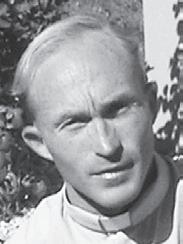
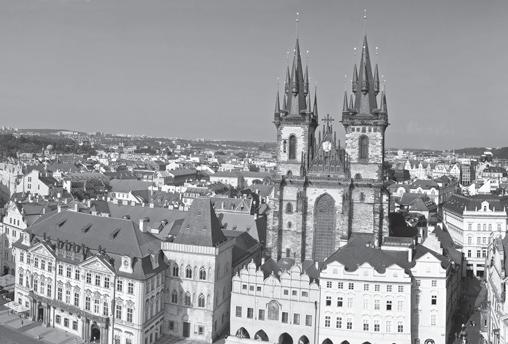
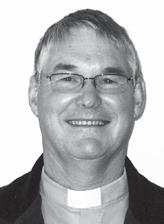

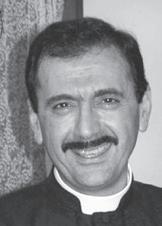
Following on from revelations in the US in 2002 and in Ireland in 2009, Catholics feel shock and anger at what has been done. Now the media are pointing the finger of accusation at the man who many believe did more than anyone else to confront and stamp out the problem.
Journalist Tim Wallace has been following the case and compiled this special report for The Record...

Media commentators have called them “smoking guns” – documents allegedly proving the scandal of clerical sex abuse in the Catholic Church goes all the way to the top, that the Pope had covered up, condoned or looked the other way when dealing with clerical molestators.
Over the past five weeks or so, two media organisations – The New York Times and Associated Press – have made headlines around the world with two stories each regarding Joseph Ratzinger’s ostensible culpability in handling, badly, the cases of five different priests – one as as Archbishop of Munich, four as head of the Sacred Congregation for the Doctrine of the Faith.
The last three stories revisit the cases of four American priests, all of which have been subjected to intense media scrutiny before. Their resurrection now is no mere coincidence. Two of the rehashed cases are based on documents fed to reporters by lawyer Jeff Lawrence, who has successfully sued, on behalf of victims of clerical sex abusers, American dioceses for tens of millions of dolllars and now has his sights set on suing the Vatican as well, following a US Court of Appeals ruling in early March that a civil suit against the Pope could proceed. All three stories have echoed, somewhat uncritically, the line that plaintiff lawyers want to push.
The most recent story, published by Associated Press on 10 April, has been described (by AP itself) as “the strongest challenge yet to the Vatican’s insistence that Benedict played no role in blocking the removal of paedophile priests during his years as head of the Catholic Church’s doc-
trinal watchdog office”. Reporters from other media organisations have parroted that assessment. The Times, for example, suggested the story “undermines, possibly terminally, the Vatican’s insistence that Benedict played no part in protecting paedophile priests”.
All very shocking. Except that
Michael Cook is the editor of Mercatornet, a news and current affairs website that is winning a growing legion of fans with its new approach to covering current trends and issues with an impressive and growing stable of surprisingly well-connected contributors.
Subscribers (subscription is free) receive a regular updated email listing all the new issues being covered in the latest edition of his site which can be found at Mercatornet.com.
Over recent years, Mercatornet has also developed a series of e-zines or regular email updates and blogs for those readers interested in specific subjects. One of the latest additions is a blog on fashion by Katie Hinderer known as TigerPrint. Its snappy presentation and writing aimed at women readers are an astute move on the part of Mercatornet and Cook, who has recently moved office from Melbourne to Sydney as Mercatornet’s business grows.
The latest blog launched by Cook and Mercatornet is called Just B16 and has been set up to analyse the issues and media coverage generated by the allegations against the Pope by The New York Times and other global media.
it’s bunk. It would be more correct to say this latest “revelation” is the strongest challenge yet to the above media organisations’ insistence they are in the business of fair and accurate reporting and that it undermines, possibly terminally, their claim to having, at least on the matter of religion, any sem-
blance of informed insight editorial integrity.
The story went like this: Joseph Ratzinger, as prefect of the Sacred Congregation of the Doctrine of the Faith, “had resisted pleas to laicise a Californian priest who had a record of sexually molesting children”, citing concerns including
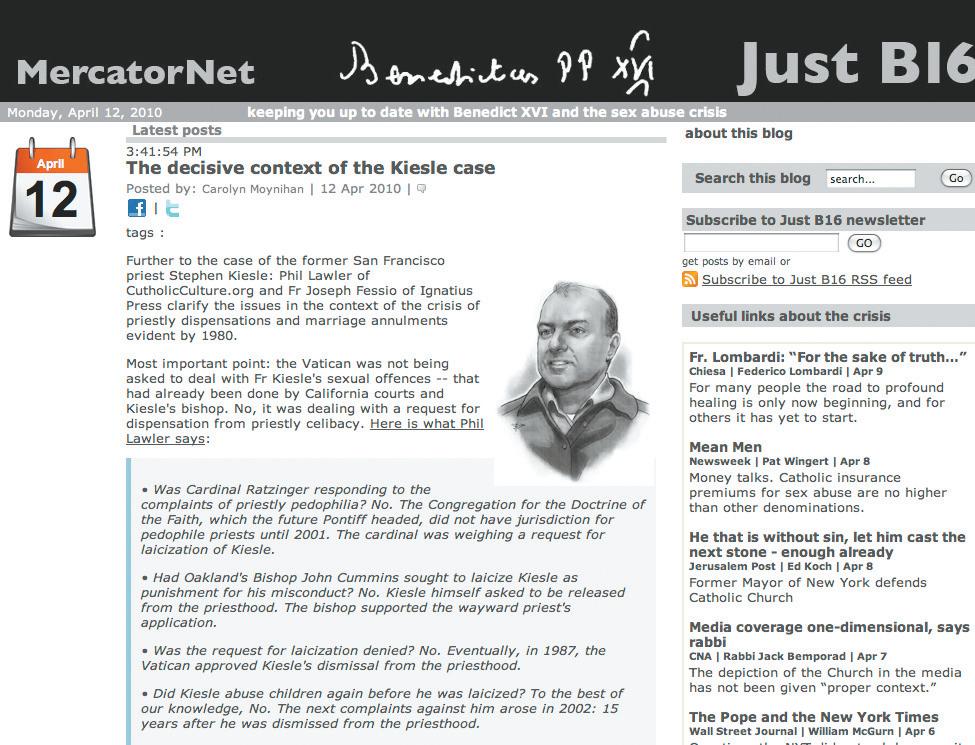
Mercatornet’s Just B16 blog. Going where other media have not followed?
In setting it up, Cook is providing coverage and sourcing fascinating angles to the story that the media are simply not managing to find or report.
Anyone wanting to look or subscribe can find Just B16 at: www.mercatornet.com/justb16.
In Australia, it was Cook and Just B16 that turned up the defence of Benedict XVI by Spanish and Jewish poet and novelist Jon Juaristi’s contribution. Juaristi entered the fray, writing: “This has been eclipsed since Benedict XVI made public his
letter to the Catholics of Ireland. From that moment, the target of the attacks was no longer the paedophile priests and the coverup Bishops, but the Pope himself. Self-righteous progressives have mobilised against him, interpreting the letter as a sign of weakness, when it has clearly been a demonstration of moral strength which demonstrates the notorious inability of progressives to carry out a similar critique of their own iniquities.”
PETER ROSENGREN“the good of the universal Church” in a 1985 letter bearing his signature.
Stephen Kiesle, ordained in 1972, had been convicted in 1978 of tying up and molesting two boys in a church rectory, for which he received a three year suspended sentence and was ordered to undergo therapy. The request that he be laicised, made to the Vatican in 1981, was finally granted in 1987.
The problem with the AP interpretation is that the documents, on closer scrutiny, show nothing of the sort. Ratzinger had not resisted a plea to laicise Kiesle as a punitive measure for his sex crimes.
The term “laicise” suggests dismissal, something imposed on a priest involuntarily whereas the correspondence (obtained from Anderson) shows the case was presented to the CDF as a petition for voluntary laicisation, with Kiesle himself seeking dispensation to be freed from his priestly vows, including that of celibacy.
This would explain why the CDF, which was not given responsibility for handling sex abuse cases until 2002, would have been receiving the petition in the first place: throughout the 1980s it had jurisdiction over the granting of dispensations; not with laicising clerical child molesters.
While a letter from Kiesle’s Bishop to the Pope, John Paul II, did itemise Kiesle’s sex crimes, it is unclear from the correspondence released by Lawrence what exact information was conveyed to the Congregation for the Doctrine of the Faith.
An internal memo from the Diocese of Oakland dated 20 December 1983 states the case was originally sent to Rome on 7 July 1981, yet there is no letter with that date in the correspondence
published by The NY Times. There are, however, two letters in support of Keisle’s petition to be freed from the obligations of the priesthood, addressed to Ratzinger’s predecessor as prefect of the CDF, Franjo Šeper, who retired in late November 1981 (and died a month later), and they are illuminating in their lack of emphasis regarding Kiesle’s criminal convictions.
The first, dated 25 April 1981 from the pastor of the parish to which Kiesle had been assigned as a deacon, mentions Kiesle’s domineering mother and that he went through with ordination “because of the reverential fear and human respect” for her. It notes that Kiesle was “a very intelligent, personable and industrious young man, and yet he lacked maturity and responsibility and spirituality.” It mentions he worked with teenagers and children: “They liked him and co-operated with him. Yet he acted as one of them: played ball with with them: took them to outings and shows and spent time in their homes.”
“I was somewhat concerned, but never received any unfavourable comments. Only some years after he left did I learn of some improprieties that were going on while he was here,” the letter continues. “Before his ordination I spoke with our Ordinary, the late Bishop Begin, that I was concerned about the literature he was reading, the magazines he had in his room, and in general his lack of maturity and spirituality. To me, there were signs of some internal turmoil and the need to satistfy his nature and share his life with someone.”
relationships with young children. These incidents did not come to light until after my return to the parish. I feel confident that the Acta already possesses a sufficient description of the nature of the difficulties so I will not elaborate here.”
Given the decidely opaque language (the phrase “beating around the bush” springs to mind), is it any wonder Ratzinger asked for more information?
According to Anderson: “What these documents demonstrate irrefutably is that Cardinal Ratzinger himself, in his own hand, not only delayed the removal of this priest but chose to protect the reputation of the church over the well-being of the children.”
This makes no sense: Kiesle’s court appearances, as the let-
weren’t seeking to paint him as a heroic local Bishop thwarted by recalcitrant Vatican officials. To his credit, Morano never sought to shift the blame either and apologised publicly several times over the last four years of his life for his mistakes in allowing sexually abusive priests to remain in ministry.
Examination of correspondence between Moreno and Ratzinger regarding Teta’s case (available from the Arizona Daily Star’s website) flatly contradict AP’s interpretation that Ratzinger took it “then let it languish at the Vatican for years” despite repeated pleas from Moreno that Teta be removed from the priesthood. This complete misereading of the facts seems to be based on the misapprehension that the trial process was conducted by the Vatican, when in fact it was done by the Tucson diocese.

According to the AP report:
In a signed letter dated 8 June 1992, Ratzinger advised Moreno he was taking control of the case ... Five years later, no action had been taken.” This is simply untrue. What Ratzinger advised was that, as the judicial process before Moreno’s own diocesan tribunal involved an allegation of having committed an act of solicitation in the confessional, the conduct of that judicial process had to be pursued in line with the CDF’s Instructio
The media haven’t cottoned on to it yet, but the real issue is a crisis of our society
The difficulty for a Catholic newspaper in covering the issue of abuse is manyfaceted.
Any approach in reporting or even editorialising on an issue which can be perceived as defensive of the Church may well be misconstrued as being indifferent to, or more tolerant of the nature of the crime and to those who are victims – in effect, a double standard. A Catholic newspaper can easily be suspected of being no more than an official mouthpiece, seeking to shift the blame away from the Church.
There is also a resistance among Catholics to seeing anything at all on the matter, emotively feeling as many do that the subject is too sensitive and unpleasant to discuss. Any coverage can also be misinterpreted as an attack on the good name of the Church.
Priests undeniably experience real distress at the global avalanche of reports peaking at various times within the last decade and may feel their vocation has been singled out unfairly. They can feel that reporting on the matter is adding further burdens to an already difficult situation for them. They see themselves, not without cause, as the next potential targets of a media frenzy on the issue. Every priest in our society must be wincing at every further speculation, allegation or confirmed case.
There is therefore a strong tendency at many levels within the Church in Australia to simply avoid wanting to hear anything about the issue.
al policy known as ‘Towards Healing’ which sees contact points, forums for investigations and assistance, as far as humanly possible, with healing and reconciliation made available by the Church. It is also true to note that without solid media reporting of the US cases, the Catholic Church would probably have moved more slowly on the issue than it has.
When the process which is being carried out by the Catholic Church around the globe is completed, however, numerous other institutions in society will be faced with a choice – whether to go down the same path by confronting the problem in all its aspects. It has become apparent that sexual abuse of children and minors is actually a global social problem of pandemic proportions (see separate articles in this edition). Paradoxically, while the attention of the world’s media is riveted on the Catholic Church, it now appears there are good grounds for saying that the safest place in the world for children is within the Church and the single safest group of men for children to be around anywhere are actually Catholic priests.
Another interesting question generated by the issue is that while the Church has admittedly taken time to come to terms with the phenomenon of betrayal by individuals within its midst and to develop its response, will the feeding frenzy of media coverage prevent the media from being able to come to terms with the fact that the the group most suspected of being potential abusers – priests and Religious - are actually among the safest people anywhere for children to be around?
That’s it. No reference whatsoever of Kiesle being accused, let alone convicted, of molesting multiple children.
The second letter, dated 8 May 1981 from Kiesle’s pastor, came closer to the ugly truth, but only just.
Kiesle “was an extremely talented, creative and bright individual” though also “highly disorganised, irresponsible in following through with normal tasks, hugely undisciplined and unmotivated to fulfil large areas of priestly ministry. His main interest obviously was working with young people. it was with great difficulty that he related to most adults ...”
And then this: “Even apart from the eventual difficulty that Fr Kiesle had with the law because of his relationship to young children, there was objective reason to question his fitness for ministry and certainly his interest in it. Repeatedly, parishioners came to me expressing their concerns about him and the quality of his ministry. Fr Kielse is a likeable person and therefore did not normally anger or upset the parishioners. What they expressed more was a type of concern for his indifference and adolescent behaviour.
“While I was away from the parish on a sabbatical leave Fr Kiesle become involved in questionable
ter to the Pope makes clear, had already attracted a great deal of publicity throughout California. If Ratzinger’s prime motivation was to protect the reputation of the Church, keeping Kiesle a priest was not the answer. Clearly, there is more to this story.
One week before making a
hash of the Kiesle story, Associated Press ran a similar argument up the flag pole in relation to the laicisation of two priests from Tucson, Arizona –Michael Teta and Robert Trupia – though at least in this instance the laicisations were actually laicisations.
Nonetheless, AP felt the cases “cast further doubt on the Catholic Church’s insistence that Pope Benedict XVI played no role in shielding paedophiles before he became Pope. He was guilty of of allowing the cases to “languish” for years. According to another plaintiff lawyer, Lynn Cadigan, who represented two of Teta’s victims: “There’s no doubt that Ratzinger delayed the laicisation process of dangerous priests who were deemed satanic by their own Bishop.”
That Bishop, Manual Moreno, has not disagreed with Cadigan’s assessment, since he has been conveniently dead since 2006. But it’s worth noting that she and other lawyers who settled out of court with the diocese of Tuscon in 2002
“When your Diocesan Tribunal will have passed its definitive sentence in the case in question, we would kindly request that Your Excellency arrange for a copy of that sentence along with all the act of the case to be sent to this Dicastery,” Ratzinger concluded.
Five years, on 28 April 1997, that is what Moreno did. It was the Vatican waiting on a result from the Tucson diocese, not the other way around!
In the case of Robert Trupia, the AP spin was even more dumbfounding. Moreno had suspended Trupia in 1992 (not before time: it was about 17 years after the Archdiocese had been alerted to his molestation of boys). From that time on, as Moreno’s successor, Bishop Gerald Kicanas, explained to the Arizona Daily Star, Trupia was not able to present himself as a priest, wear a clerical collar or perform any ministry.
Trupia’s case fell under the jurisdiction of the Congregation for the Clergy (which had competence at that time in matters of sexual abuse of minors). “Being a canon lawyer, Robert Trupia used every means possible to delay any action in his case,” Kikanas said.
“The delays in this case were substantially the result of Robert Trupia’s manipulation of canon law and not a slow response from the Congregation for the Clergy.”
The case only came under Ratzinger’s watch in 2001 when Pope John Paul II transferred responsibility over all matters of the sexual abuse of minors from Please turn to Page 6
In this special report, The Record has attempted to present the truth without seeking to obscure the evil nature of an undeniable reality that has become apparent in the last decade. It has sought to place the issue in context without excusing any aspect of it. In the process, The Record has discovered new information generally unknown and unreported within societies such as Australia, and largely unreported by the media. This new information brings into question the capacity of media to adequately report serious issues with serious consequences for many people.
What is clear at the moment is that we can expect more coverage of the issue of abuse within the Church to come, nation by nation, as the media follows the issue. There is more, probably much more, to emerge in countries around the world including Australia.
What appears to be an interesting aspect of the issue, however, is that amid all the coverage, what is not being ‘heard’ by audiences around the world is that the Catholic Church has begun cleaning up its act in relation to handling cases and allegations of abuse and is well down the track in the process in comparison to almost every other institution in the world. This process was most notably pushed by the 2002 abuse crisis in the US where today there are strict policies and measures in place and where the number of allegations has dropped to almost nil. A similar process can be expected in Ireland and in other countries as well. In Australia, the charges and known cases of abuse have resulted in a nation-
In essence, what the figures are now revealing in the cold hard light of day is that the abuse crisis is also a civilisational and cultural crisis. In a society which has abandoned almost all norms in relation to family life, sexual morality and marriage and where the process of disinvestment of troublesome moral values has been largely transmitted by the media, will our societies be able to begin what the Church already is carrying out?
Unlike the question in relation to the Church there seems to be no obvious answer for our societies, and if there is no confidence that our society can do the same thing for its children as the Church is currently engaged in carrying out (if only because at the end of the day society no longer has any sustaining or profound moral code in relation to personal responsibility or behaviour to guide it), then our society has reached a very serious point indeed.
Among the more curious questions that can be asked of the current situation, however, is the following: while our society’s attention is fixed on the Catholic Church and on priests, why is Australia unable, or unwilling, to turn its attention to solving the whole problem?
It is heartening to see that after the sensationalism of The NY Times and AP’s reporting on the issue over the last month, a wider realisation is sinking in generally, and being expressed by astute observers as the coverage in this edition shows, that more and more people are realising that it is not so much the Church that has to answer questions as the media itself. Its once-trumpeted standards of truth have been shot to pieces. The cost? If Australia and wider societies around the world are unable to address the undeniable plague in our own midst then the victims will be, as always, children and our youth.
- Many Bishops from across the globe have weighed in to support Benedict XVI as he is slandered by media accusations regarding the sex abuse scandal.
They agree that a campaign is under way to discredit the Church and they are calling Catholics to prayer and communion with the Vicar of Christ.
“The visible head of the Mystical Body of Christ has been mistreated by enemies of the Church, with unheard of lack of respect for the truth and with a display of incredible cynicism,” remarked Cardinal Juan Luis Cipriani Thorne, Archbishop of Lima, at the Chrism Mass he celebrated on 31 March.
“Behind it all we can see an attack on the Church to harm her.
“We, his children, cannot remain silent. Prayer is the main weapon that the Holy Spirit puts at his disposal. “Let us pray for the Pope, for the Church, for the Bishops, for priests and for consecrated life. [...] Let us seek personal sanctity with greater force.”
The episcopal conference from Paraguay sent a letter to Benedict XVI affirming “support, communion and solidarity.”
The Bishops expressed their “communion with the Pope, at this moment of pain because of the attacks he receives in his character of pastor of the universal Church” - attacks that seek “to weaken his voice and moral authority.”
In Santiago, Chile, Cardinal Francisco Errázuriz said on Palm Sunday that “some media try to strike the Pope’s good name accusing him of things for which the Holy Father never had responsibility. That same day, Bishop Felipe Arizmendi Esquivel of the Mexican Diocese of San Cristobal de las Casas, during the celebration of Mass, affirmed that Benedict XVI has always acted with responsibility in regard to the problem of sexual abuse in the Church.
“We are suffering for the internal sins that are undeniable, as is also the betrayal of Judas, Peter’s denial and the moving away of the Apostles themselves, who left Jesus alone,” he said. “They have even wished to splash Pope Benedict
Since
Laicized Ministry curtailed or limited Not convicted
Proceedings usually occurred in the diocese of origin under the supervision of the
80% NO CHURCH TRIAL
Because of overwhelming proof,
percent of all offenders were dismissed from the priesthood at their own request or by papal decree. Sixty percent were not tried, usually because of advanced age of the priest, and were subject to administrative and disciplinary provisions.
Source:
XVI with mud,” though “since he was Archbishop of Munich” and “afterwards as prefect of the Congregation for the Doctrine of the Faith, he always dealt with these cases with extreme care and the highest level of responsibility.”
In the Dominican Republic, the Archbishop of Santo Domingo, Cardinal Nicolás de Jesús López Rodríguez stressed the criteria of firmness, transparency and severity with which Benedict XVI has treated and treats cases of abuse of minors.
The Cardinal said on 30 March in a press conference in Santo Domingo that some of the media intends to underrate the facts and force interpretations.
“That’s nothing new and no one ignores that it is a confabulation of sectors of European governments
and groups of the United States, which do not forgive the Pope or the Church for the firm position in defence of life and rejection of the crime of abortion,” he stated.
In Spain, Archbishop Jesús Sanz Monte of Oviedo, together with the retired bishop of his archdiocese and his auxiliary, priests, communities of consecrated life and laity of the Archdiocese and the Dioceses of Huesca and Jaca, sent a letter expressing their respect and filial affection.
“In these days of profound liturgical experience, the dioceses that the Holy See has entrusted to me as Archbishop of Oviedo and apostolic administrator of Huesca and Jaca have had occasion to celebrate the Chrism Mass in the respective Cathedrals. In this framework we made special mention and raised
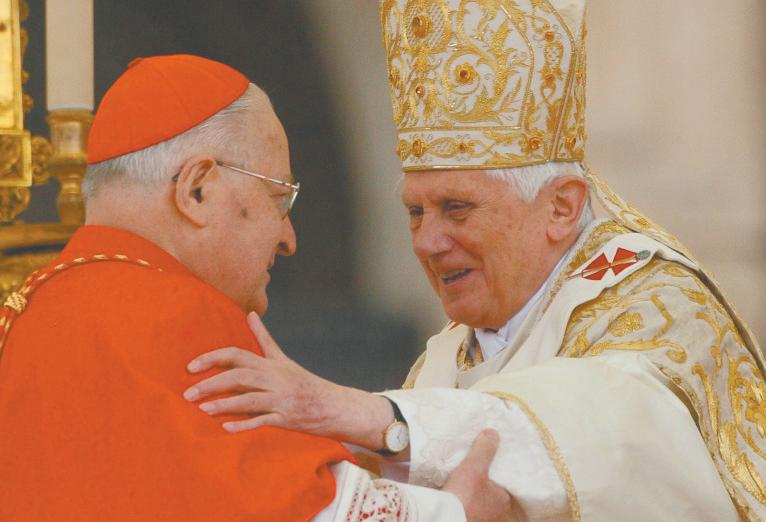
prayers for your dear person,” the letter explains.
“The testimony of love for the truth that Your Holiness is transmitting to us with depth and beauty, does not conceal the profound pain that the events that occurred among some priests and consecrated persons have caused in your fatherly heart,” they reflected.
“The clear closeness to the innocent victims and the reprobation of the grave sins committed by these sons of the Church has been an evangelical example of firmness, liberty and mercy that we have recognised with gratitude.”
Together with gratitude for the Pope’s testimony of love for the truth, the letter expresses grief for “the unjust and fallacious treatment that some of the media and tendentious groups are giving your person and your long and faultless ministry as Archbishop of Munich, as Cardinal Prefect of the Congregation for the Doctrine of the Faith and now as Successor of Peter.”
At the Chrism Mass on Tuesday in Madrid’s Cathedral, the president of the Spanish episcopal conference, Cardinal Antonio Rouco Varela, also affirmed union with the Pope “precisely in these days in which he is so offended and attacked.” The military Archbishop
of Spain, Archbishop Juan del Río Martín, manifested his communion and filial affection to the Pope in a letter, and the military jurisdiction dedicated the Holy Hour on Holy Thursday to pray for the Church.
Archbishop Joan Enric Vives Sicilia of Urgell expressed in a letter to the Pope his “filial adherence to your person and your exemplary teaching, your manifest kindness and humility, and your tenacious fight against this sin that offends God and hurts His children.”
Archbishop Carlos Osoro Sierra of Valencia reflected Wednesday that “nothing, not even the opinions of men - no matter how organised and orchestrated they arewill destroy the priestly ministry that Jesus Christ himself designed with so much love.”
In Rome, Cardinal Antonio Cañizares Llovera, Prefect of the Congregation for Divine Worship and the Sacraments, expressed his closeness to the Pope on Tuesday, during the homily of a Mass with members of the Italian Parliament.
“Thank you, Holy Father,” he said. “With the whole Church, and in a particularly eminent way in the present times, we are with Peter, with the great gift that God has given us in his Successor, our greatly loved Pope Benedict XVI.”
Continued from Page 5 the Congregation for the Clergy to the Congregation for the Doctrine from the Faith.
According to Kicanas, that the case was closed by 2004 can only be interpreted as that the CDF acted expeditiously, bearing in mind the office, with only a few dozen staff members, was dealing with a significant number of cases from many dioceses.
For sheer scope of journalistic ineptitude though, The New York Times probably takes the biscotti for its expose that, under Ratzinger, the CDF “declined to defrock a priest who molested as many as 200 deaf boys” because the highest priority of the Vatican officials was protecting the Church from scandal” – relying in part on a computer-generated translation of a Vatican document written in Italian and interpretations documents actually in English that simply couldn’t be sustained under any level of scrutiny
The case of Lawrence Murphy is deeply disturbing. Appointed chaplain of St John’s School for the Deaf in Milwaukee in 1950 and promoted to its director in 1963,
he would later admit to molesting about two dozen teenage boys during his two-decade tenure at the school, though the number of victims was likely much higher.
Over three decades their complaints largely fell on deaf ears – not just of Church officials, but also of civil authorities.
Talk of his sexual misconduct apparently swirled from at least the mid-1950s, and in the early 1970s former students formally complained to the police and the office of the district attorney.
While the civil authorities declined to prosecute Murphy, so say he got away scot free is not entirely accurate; In 1974 he was “relieved of all teaching and pastoral duties as they relate to the students” (as the local Catholic newspaper reported), and then, a few months later, placed on “temporary sick leave” – leave that remained permanent.
He received no further pastoral assignments and lived in a house owned by his family outside of the Milwaukee diocese.
Nonetheless his ministry was never formally restricted and he remained in good public standing,
assisting at local parishes in the diocese in which he lived. In 1996 the Archbishop of Milwaukee, Rembert Weakland, decided the interests of justice and reconciliation (and also, perhaps, in the face of the threat of civil lawsuits) that more overt disciplinary action was needed.
He wrote to the CDF in July seeking guidance. In March 1997, the Secretary of the CDF, Cardinal Tarcisio Bertone, instructed Weakland to begin a canonical trial.
According to the NY Times, Cardinal Bertone “halted the process after Father Murphy personally wrote to Cardinal Ratzinger protesting that he should not be put on trial because he had already repented and was in poor health and that the case was beyond the Church’s own statute of limitations”. Not so. The correspondence shows only that Bertone wrote to Weakland in April 1988 and noted that, given Murphy’s ill-health and the length that had passed since the offence, making the outcome of a canonical trial uncertain, the Congregation invited Weakland to give careful consideration to use
pastoral measures (“fraternal correction or rebuke of other means pastoral solicitude”) to “retain the reparation of scandal and the restoration of justice.”
The choice of whether to continue with the canonical trial remained with Weakland, and the decision to discontinue the trial in August 1998 was his. A few days later Murphy died. Had he therefore cheated justice? Only if one doesn’t believe in an afterlife.
Which brings me, finally, to the very first story in this reverse chronology – that under Joseph Ratzinger’s watch as Archbishop of Munich, his delegation of administrative responsibilities led to a known sexual abuser, Peter Hullerman, initially transferred to Ratzinger’s archdiocese for therapy, was put back into circulation, amongst unsuspecting, trusting parishioners, and went on to molest again.
On this point, I think the Pope does have good reason to feel chastened.
For even if he was completely unaware of decisions concerning Hullerman, the point is that he was the archbishop, the buck
stopped with him – just as the buck stopped, and must continue to stop, with the Bishops and Archbishops charged with protecting their flock from wolves in shepherds’ clothes.
Which is the extreme – dare I say perverse – irony of this shabby media-confected campaign to paint the Pope as a venal, hypocritical criminal.
As Damian Thompson, the insightful religion blogger London’s Telegraph has put it: “Here we have the complete rewriting of history.”
Earlier in this decade, newspapers exposed the sad truth that many bishops had kept pedophile priests in active ministry.
Now they would have us believe that those bishops were striving to rid the priesthood of the predators, but the Vatican resisted!
“There is a scandal here, indeed, but it’s not the scandal you’re reading about in the mass media. The scandal is the complete collapse of journalistic standards in the handling of this story.”
Tim Wallace is a freelance journalist and editorial consultant. He has worked on the news desks of the Sydney Morning Herald, The Age, Australian Financial Review and Canberra Times.
“It’s pretty clear now that The New York Times has screwed up its coverage of Pope B enedict XVI and the child abuse scandals. In fact, I doubt it could have done a worse job if it had brought back Jayson Blair to report the stor y [Cardinal William] Levada asks the NYT to “reconsider its attack mode” Can’t see that happening: certain columnists, reporters and executives are just too blinded by hatred of this Pope I don’t normally wish unemployment on fellow journalists – even snooty and snarling PC ones from the Big Apple – but if the paper folded tomorrow I reckon I could contain my grief Couldn’t you?
Damien Thompson, blogs editor for the London Telegraph and specialist journalist in religion S O U R C E: J U S T B16
It might be unfashionable to say the following but it is true nonetheless: ver y, ver y small numbers of children in the care or teaching of the Catholic Church in Europe in recent decades were sexually abused, but ver y, ver y many of them actually received a decent standard of education”
Brendan O’Neill, editor of online spiked and although raised Catholic an atheist.
S O U R C E: J U S T B16
“Well, if Der Spiegel comes up with 94 suspects in 15 years, for someone who knows a bit of criminolog y, that’s a surprisingly small number It means that the current risk of sexual abuse in institutions of the Catholic Church is even lower than I would have suspected On average, about 15,000 cases of child abuse are reported to the police annually The church itself has about 600,000 employees, or about 1.8 per cent of the population. So 94 cases since 1995 seems to be a dramatic improvement of the situation since 1995. In any case more than half of sexual abuse occurs within families. This is even more true of violence In the current debate about the Catholic Church, sexual abuse and pedagog y through corporal punishment –which was common in all schools -- are so mixed up that one has the feeling that people want to stretch the numbers.”
Hans-Ludwig Kröber director of the Institute for Forensic Psychiatr y of the Free University of Berlin, also ser ving on an independent panel of exper ts advising the Catholic Church about child abuse, inter viewed in the German Journal of Political commentar y Cicero on 31 March.
S O U R C E: J U S T B16
For the crisis of sexual abuse and epis copal malfeasance has been seized upon by the Church’s enemies to cripple it, morally and financially, and to cripple its leaders. ”
G eorge Weigel, US theologian and biographer of Pope John Paul II S O U R C E: J U S T B16
The man who is now Pope reopened cases that had been closed; did more than anyone to process cases and hold abusers accountable; and became the first Pope to meet with victims ” William McGurn, in The Wall Street Journal S O U R C E: J U S T B16
“Of course, the media should report to the public any new facts bearing upon the issue of child molestation, but its objectivity and credibility are damaged when the New York Times declines to publish an op-ed offered by New York Archbishop Timothy Dolan on the issue of anti-Catholicism and offers instead to publish a letter to the editor, which is much shorter and less than an op-ed ” Ed Koch, former Mayor of NYC S O U R C E: J U S T B16
Vatican offers online s u m m a r y o f c l e r i c a l sex abuse procedures
VATICAN CIT Y (CNS) -- The Vatican has placed online a summar y of its procedures for handling sex abuse allegations against priests, in order to illustrate the church’s commitment to protecting children and punishing offenders
T h e on l i n e “ i nt ro du c tor y guide” lists the investigative steps, trial options and possible penalties for clerical sex abuse of minors, including dismissal from the priesthood It underlines the local Bishop’s responsibility to follow civil law in reporting such crimes to the appropriate authorities “ This is to help the public understand how we facilitate, how we proceed This is transparency, transparency of the Vatican We have nothing to hide,” Passionist Father Ciro B enedettini, a Vatican spokesman, said April 10
The move came after a spate of articles portrayed Vatican officials, including Pope B enedict XVI when he was the Vatican’s
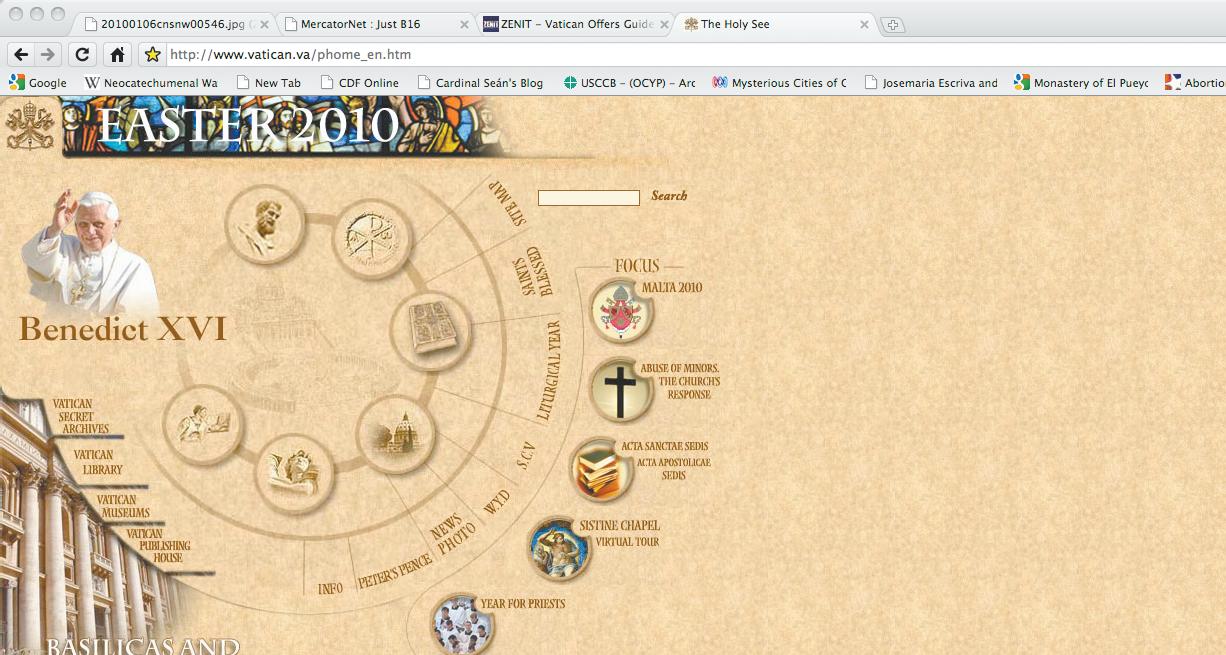
top doctrinal official, as slow to act on allegations of sex abuse by priests. Church officials have said many of the published reports exhibited a lack of knowledge about the current procedures and how they work
The online guide explains the practices adopted in the wake of a 2001 papal document that established strict universal norms for handling cases of sexual abuse by priests against minors and placed these cases under the authority of the Congregation for the Doctrine of the Faith
The guide confirmed that the Vatican was currently updating the norms to reflect some changes over the last nine years, but said the modifications would not change the basic procedures
The Web page highlighted several essential steps in investigating and processing abuse cases
First, it said, the local diocese is to investigate ever y allegation
of sexual abuse of a minor by a cleric. If the allegation has a “semblance of truth,” the case is referred to the Vatican’s doctrinal congregation
During this preliminar y stage, the local Bishop may restrict the activity of a priest as a precautionar y measure, in order to protect children. “ This is part of his ordinar y authority, which he is encouraged to exercise to whatever extent is necessar y to assure that children do not come to harm,” it said
The do c t r ina l cong regat ion then studies the case presented by the local Bishop It has a number of options at its disposal:
l Penal processes The doctrinal congregation may authorize a judicial penal trial at a local church tribunal, or it can authorize the local Bishop to conduct an “administrative penal process.” Under either procedure, if a cleric is judged guilty he is subject to a number of possible penalties, including dismissal from the priesthood Appeal can be made to a tribunal of the doctrinal congregation or to the congregation itself
l Cases referred directly to the Pope In “ ver y grave cases ” where
a civil criminal trial has found the cleric guilty of sexual abuse of minors or where the evidence is over whelming, the doctrinal congregation can take the case directly to the Pope and request the offender’s dismissal from the priesthood There is no recourse to such a penalty
The congregation also takes to the Pope requests by priests who acknowledge their crimes and asked to be dispensed from the obligation of the priesthood The Pope grants these requests “for the good of the church,” it said l Dis ciplinar y me asures In cases where the accused priest has admitted his crimes and has accepted to live a life of prayer and penitence, the local Bishop can issue a decree prohibiting or restricting the public ministr y of the priest If the priest violates the terms of the decree, possible penalties include dismissal from the priesthood Recourse against such decrees is made to the doctrinal congregation, whose decision is final
Editors: The Guide to Understanding Basic CDF Procedures Concerning Sexual Abuse Allegations is available in English at: w w w.vatican.va/ resources/resources_guide -CDF-procedures_ en.html





Priests should take heart. You wouldn’t guess it from the New York Times and other media coverage, but the startling story is that authoritative studies are showing that the safest place for children is actually in the Church
BY PETER ROSENGRENFOR anyone who doubts that the Catholic Church is the safest place in the world for children and minors, the 2006 United Nations Study on Violence against Children makes illuminating reading.
Compiled over several years of research between 2002 and 2006 by independent expert Paolo Sergio Pinheiro, the Study found that as many as 150 million girls and 73 million boys are raped or subject to sexual violence each year, while between 133-275 million children annually experience domestic violence.
The figures are staggering, and help to put into some perspective the scale of the problem so widely reported in the Catholic Church; Italian sociologist Massimo Savigne writing on March 13 pointed out that in the US case 4392 priests out of more than 109,000 were accused over a 52 year period from 1950 to 2002 of sexual relationships with minors, with civil tribunals finding more than 100 guilty.
Cases involving paedophilia appear to have run at about one per year over that period.
The Ryan Report produced in Ireland in 2009 and which uses harsh language to describe the han-

dling by bishops of known cases of abuse and allegations, refers to 253 allegations of abuse against boys and 128 cases against girls over several decades. However what the UN and other studies reveal is that sexual abuse of children and minors is a global pandemic rarely reported in the media of affluent nations such as the US and Australia.
A closer examination of the reasons for the media’s short-sightedness on this issue can be found in the main article of this special report by Sydney-based journalist Tim Wallace. The report noted that the World Health Organisation estimates between 100 and 140 million girls and women in the world have
undergone some form of female genital mutilation and/or cutting.
UNICEF estimates published in 2005 suggest that in sub-Sharan Africa, Egypt and Sudan, three million girls and women are subjected to genital mutilation and/or cutting every year.
International Labour Organisation estimates indicated in 2000 that 1.8 million children were trapped in prostitution and pornography and 1.2 million were victims of human trafficking.
For several years the world’s media attention has been glued to the Catholic Church on the issue of sexual abuse, effectively increasing the pressure on the Church to come to grips with the issue.
What has not appeared in the
AN Australian government resource sheet released last year shows that of the thousands of child abuse cases reported to state and territory authorities, only half of these notifications are fully investigated and finalised and even less are “substantiated”.
The 2009 Resource Sheet published by the Australian Institute of Family Studies (AIFS) and compiled by Leah Bromfield and Mel Irenyi, identified that there were just over 317,000 reported cases of suspected child abuse from across Australia. This Resource Sheet used data contained in a 2007-08 Australian Institute of Health and Welfare (AIHW) report titled ‘Child Protection Australia 2007-08’.
Fewer than 150,000 investigations into these notifications were finalised and of these reports, only 55,120 were substantiated.
Only Queensland requires that a notification of child abuse be fully investigated, the AIHW report states.
“A child protection notification is assessed by the department to determine whether it requires an investigation; whether it should be dealt with by
other means, such as referral to other organisations or to family support services; or whether no further protective action is necessary or possible,” in all other states, the AIHW report stated.
Ms Bromfield and Ms Ireny’s resource sheet highlighted how reported incidence of child abuse has gradually increased since 1998-1999, when the AIHW first began compiling national figures of child protection activity.
In the period 1998-99, more than 103,000 notifications of child abuse were reported to child protection authorities but due to lack of substantiated evidence from Northern Territory, a substantiated figure could not be provided for that period.
In the period 1999-00, of the 107,134 reported cases of suspected child abuse, only 24,732 were substantiated.
This 2009 government Resource Sheet titled ‘Child abuse and neglect statistics’ outlined that the “Substantiations are categorised into one of four maltreatment types: physical abuse, sexual abuse, emotional abuse and neglect”.
“Emotional abuse” made up 38 per cent of the primary forms of substantiated maltreatment types in Australia and was the largest
form of abuse in Australia for the period 2007-08. In the same period, cases of “neglect” made up 29 per cent and substantiated cases of “physical abuse” made up 23 per cent, where “neglect” refers to “the failure (usually by the parent) to provide for a child’s basic needs, including failure to provide adequate food, shelter, clothing, supervision, hygiene or medical attention”.
Just 10 per cent (5,491 cases) of substantiated Australian cases in 2007-08 were regarded as “sexual abuse”.
The majority of these cases of sexual abuse occurred in NSW (3,875) while the least amount occurred in the ACT (45).
The authors of the AIFS add to the report that these “Child protection statistics tell us how many children come into contact with child protection services”.
Compilers of the AIFS Resource Sheet, Ms Bromfield and Ms Irenyi, note that the analysed statistics are limited in that they could include children who may not have been abused, and may exclude children who have been abused.
AIHW data is captured such that “Each new notification or substantiation does not necessarily represent a different child”.
against girls between 13 and 24 years of age” in Swaziland as an important development because its findings corroborated the 2006 UN report.
“According to this survey,” she said, “one in three girls experienced some form of sexual violence as a child; and approximately nine per cent experienced coercive sexual intercourse before they reached 18 years old.”
“The study also revealed that violence is perpetrated by people children know and trust. In the case of sexual violence, 75 per cent of the perpetrators were well known to the victims, including husbands and boyfriends, male relatives and neighbours. Often occurring within the home, sexual violence remains hidden and largely kept as a family secret. Many victims depend on the perpetrators for social and economic support; these in turn, make use of their status to intimidate children and coerce them to keep silent.”
media, however, is a contextualisation of the problem.
Quoting a multi-country study, the 2006 UN report indicated that sexual violence and/or abuse against children within the home is, at least, being increasingly acknowledged. Figures are not precise because of the sensitive nature of the problem and because victims are often dependent on perpetrators for economic support and stability. What is clear is that the numbers are staggering. The overview of studies conducted in mainly developed countries found that between 7-26 per cent of women and 3-29 per cent of men reported sexual victimisation during childhood, with girls being abused an estimated 1.5-3 times the rate for males. Most abuse, the overview found, occurred within the family circle.
Another WHO study of both developed and undeveloped studies showed that between 1-21 per cent of women reported being sexually abused before the age of 15 by male family members other than the father or stepfather.
In March this year, Marta Santos Pais from the office of the Special Representative of the UN’s Secretary General on Violence Against Children returned to the subject issuing a statement on a follow up study to the 2006 report.
She described a study “on sexual, physical and emotional violence
Archbishop Silvano Tomasi, the Vatican’s Permanent Observer to the UN summarised some of the relevant statistics which rarely get a hearing in competition with the sensational reports to do with such alluring figures for journalists as the head of the Catholic Church.
Delivered at the UN in 2009 in reply to an attack by the International Humanists Union, Archbishop Tomasi pointed out:
● While the problem in the Church is described as pedophilia, an estimated 80-90 per cent of the problem is same-sex attracted men predating on adolescent boys and youth aged 11-17.
● It is estimated that over the last 50 years somewhere between 1.5 per cent and 5 per cent of Catholic clergy has been involved in sexual abuse cases. The Christian Science Monitor reported on the results of a national survey by Christian Ministry Resources in the US in 2002 and concluded: “Despite headlines focusing on the priest pedophile problem in the Roman Catholic Church, most American churches being hit with child sexual-abuse allegations are Protestant, and most of the alleged abusers are not clergy or staff, but church volunteers”. Sexual abuses within the Jewish communities approximate that found among the Protestant clergy, according to Rabbi Arthur Gross Schaefer, professor of law and ethics at Loyola Marymount University.
● According to Dr Garth A. Rattray 85 per cent of the offend ers of child sexual abuse are family members, babysitters, neighbours, family friends or relatives.
Please turn to Page 20

The following article by Ed Koch, a Jew and former Mayor of New York, was published in The Jeruslaem Post on 8 April
Ibelieve the continuing attacks by the media on the Roman Catholic Church and Pope Benedict XVI have become manifestations of anti-Catholicism. The procession of articles on the same events are, in my opinion, no longer intended to inform, but simply to castigate.
The sexual molestation of children, principally boys, is horrendous. This is agreed to by everyone, Catholics, the Church itself, as well as non-Catholics and the media.
The Pope has on a number of occasions on behalf of the Church admitted fault and asked for forgiveness.
For example, The New York Times reported on 18 April, 2008, that the Pope “came face to face with a scandal that has left lasting wounds on the American Church Thursday, holding a surprise meeting with several victims of sexual abuse by priests in the Boston area ... ‘No words of mine could describe the pain and harm inflicted by such abuse,’ the Pope said in his homily. ‘It is important that those who have suffered be given loving pastoral attention.’” On 20 March, 2010, The Times reported that in his eight page pastoral letter to Irish Catholics, the Pope wrote, “You have suffered grievously, and

I am truly sorry ... Your trust has been betrayed and your dignity has been violated.”
The Pope also “criticised Ireland’s Bishops for ‘grave errors of judgement and failures of leadership.’” The primary explanation for the abuse that happened - not to excuse the retention of priests in positions that enabled them to continue to harm children - was the belief that the priests could be cured by psychotherapy, a theory now long discarded by the medical profession.
Regrettably, it is also likely that years ago the abuse of children was not taken as seriously as today. Thank God we’ve progressed on that issue.
Many of those in the media who are pounding on the Church and the Pope today clearly do it with delight, and some with malice. The reason, I believe, for the constant assaults is that there are many in the media, and some Catholics as well as many in the public, who object to and are incensed by posi-



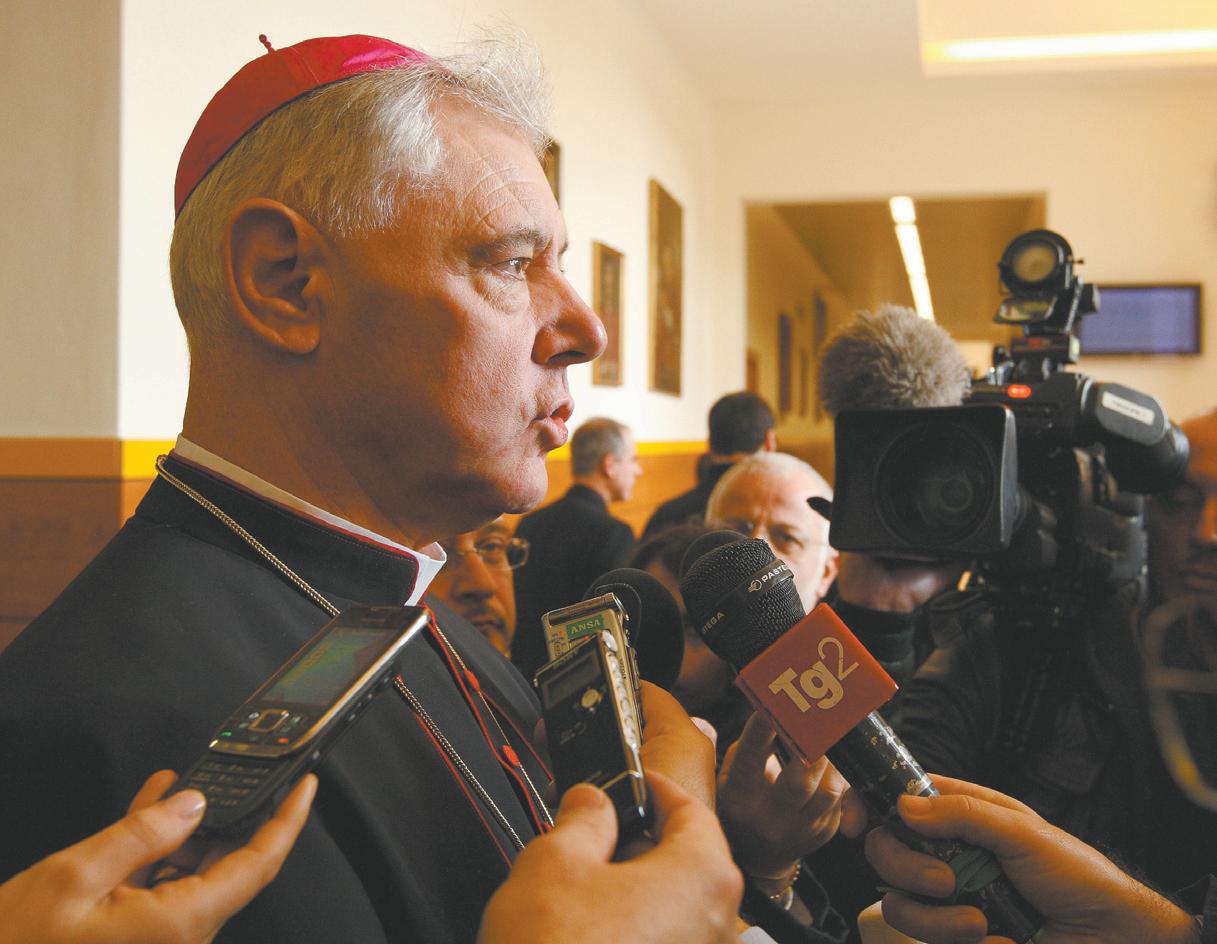
tions the Church holds, including opposition to all abortions, opposition to gay sex and same-sex marriage, retention of celibacy rules for priests, exclusion of women from the clergy, opposition to birth control measures involving condoms and prescription drugs and opposition to civil divorce.
My good friend, John Cardinal O’Connor, once said, “The Church is not a salad bar, from which to pick and choose what pleases you.”
The Church has the right to demand fulfillment of all of its religious obligations by its parishioners, and indeed a right to espouse its beliefs generally. I disagree with the Church on all of these positions.


Nevertheless, it has a right to hold these views in accordance with its religious beliefs. I disagree with many tenets of Orthodox Judaism - the religion of my birthand have chosen to follow the tenets of Conservative Judaism, while I attend an Orthodox synagogue.
Orthodox Jews, like the Roman Catholic Church, can demand absolute obedience to religious rules. Those declining to adhere are free to leave. I believe the Roman Catholic Church is a force for good in the world, not evil.
Moreover, the existence of one billion, 130 million Catholics worldwide is important to the peace and prosperity of the planet.
Of course, the media should






report to the public any new facts bearing upon the issue of child molestation, but its objectivity and credibility are damaged when The New York Times declines to publish an op-ed offered by New York Archbishop Timothy Dolan on the issue of anti-Catholicism and offers instead to publish a letter to the editor, which is much shorter and less prominent than an op-ed.
I am appalled that, according to The Times of 6 April, 2010, “Last week, the centre-left daily newspaper La Repubblica wrote, without attribution that ‘certain Catholic circles’ believed the criticism of the Church stemmed from ‘a New York Jewish lobby.’”
The Pope should know that some of his fellow priests can be thoughtless or worse in their efforts to help him.
If the “certain Catholic circles” were referring to The Times, the Pope should know that the publisher, Arthur Sulzberger, Jr, is Episcopalian, having taken the religion of his mother, and its executive editor, Bill Keller, is also a Christian.
Enough is enough. Yes, terrible acts were committed by members of the Catholic clergy. The Church has paid billions to victims in the US and will pay millions, perhaps billions more to other such victims around the world.
It is trying desperately to atone for its past by its admissions and changes in procedures for dealing with paedophile priests.
I will close with a paraphrase of the words of Jesus as set forth in John 8:7: He [or she] that is without sin among you, let him [or her] cast the next stone.





Pope Benedict XVI has been bashed from pillar to post by journalists, atheists and others, calling
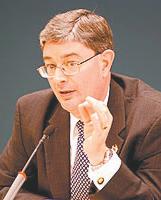
This article by prominent US theologian and Church watcher George Weigel appeared on 29 March in the influential journal First Things after allegations by The New York Times that Pope Benedict XVI turned a blind eye to cases of priests sexually abusing boys.
The sexual and physical abuse of children and young people is a global plague; its manifestations run the gamut from fondling by teachers to rape by uncles to kidnapping-and-sex-trafficking. In the United States alone, there are reportedly some 39 million victims of childhood sexual abuse.
Forty to 60 per cent were abused by family members, including stepfathers and live-in boyfriends of a child’s mother - thus suggesting that abused children are the principal victims of the sexual revolution, the breakdown of marriage, and the hook-up culture.
Hofstra University professor Charol Shakeshaft reports that 6-10 percent of public school students have been molested in recent years—some 290,000 between 1991 and 2000.
According to other recent studies, two per cent of sex abuse offenders were Catholic priests - a phenomenon that spiked between the mid-1960s and the mid1980s but seems to have virtually disappeared (six credible cases of clerical sexual abuse in 2009 were reported in the US Bishops’ annual audit, in a Church of some 65,000,000 members).
Yet in a pattern exemplifying the dog’s behaviour in Proverbs 26:11, the sexual abuse story in the global media is almost entirely a Catholic story, in which the Catholic Church is portrayed as the epicentre of the sexual abuse of the young, with hints of an ecclesiastical criminal conspiracy involving sexual predators whose predations continue today.
That the vast majority of the abuse cases in the United States took place decades ago is of no consequence to this story line.
For the narrative that has been constructed is often less about the protection of the young (for whom the Catholic Church is, by empirical measure, the safest environment for young people in America today) than it is about taking the Church down—and, eventually, out, both financially and as a credible voice in the public

debate over public policy. For if the Church is a global criminal conspiracy of sexual abusers and their protectors, then the Catholic Church has no claim to a place at the table of public moral argument.
The Church itself is in some measure responsible for this. Reprehensible patterns of clerical sexual abuse and misgovernance by the Church’s Bishops came to glaring light in the US in 2002; worse patterns of corruption have been recently revealed in Ireland. Clericalism, cowardice, fideism about psychotherapy’s ability to “fix” sexual predators - all played their roles in the recycling of abusers into ministry and in the failure of Bishops to come to grips with a massive breakdown of conviction and discipline in the post-Vatican II years. For the Church’s sexual abuse crisis has always been that: a crisis of fidelity. Priests who live the noble promises of their ordination are not sexual abusers; Bishops who take their custody of the Lord’s flock seriously, protect the young and recognise that a man’s acts can so disfigure his priesthood that he must be removed from public ministry or from the clerical state.
That the Catholic Church was slow to recognise the scandal of sexual abuse within the household of faith, and the failures of governance that led to the scandal being horribly mishandled, has been frankly admitted - by the Bishops of the United States in 2002, and by Pope Benedict XVI in his recent letter to the Catholic Church in Ireland.
In recent years, though, no other similarly situated institution has been so transparent about its failures, and none has done as much to clean house. It took too long to get there, to be sure; but we are there.
These facts have not sunk in, however, for either the attentive public or the mass public. They do not fit the conventional story line. Moreover, they impede the advance of the larger agenda that some are clearly pursuing in these controversies. For the crisis of sexual abuse and episcopal malfeasance has been seized upon by the Church’s enemies to cripple it, morally and financially, and to cripple its leaders.
That was the subtext in Boston in 2002 (where the effort was aided by Catholics who want to turn Catholicism into high-church Congregationalism, preferably with themselves in charge). And that is what has happened in recent weeks, as a global media attack has swirled around Pope Benedict XVI, following the revelation of odious abuse cases throughout Europe. In his native Germany, Der Spiegel has called for the Pope’s resignation; similar cries for papal blood have been raised in Ireland, a onceCatholic country now home to the most aggressively secularist press in Europe.
But it was The New York Times’ front page of 25 March that demonstrated just how low those determined to bring the Church down were prepared to go.
Rembert Weakland is the Emeritus Archbishop of Milwaukee, notorious for having paid hundreds of thousands of dollars to satisfy the demands of his former male lover. Jeff Anderson is a Minnesotabased attorney who has made a substantial amount of money out of sex abuse “settlements,” and who is party to ongoing litigation intended to bring the resources of the Vatican within the reach of contingency-fee lawyers in the United States.
Yet these two utterly implausible
Religious congregations - a clear indication that dramatic leadership change in Ireland is coming.
In framing his letter to Ireland so vigorously, Benedict XVI succeeded in overcoming the institutional Vatican preference for the subjunctive in dealing with situations like this, and the pleas of Irish Bishops that he cut them some slack, given the intense pressures they were under at home.
That the Pope rejected both curial and Irish opposition to his lowering the boom ought to have made clear that Benedict XVI is determined to deal with the problem of sexual abuse and episcopal misgovernance in the strongest terms.
But for those obsessing over whether a Pope had finally “apologised” for something (as if John Paul II had not spent a decade and a half “cleansing the Church’s historical conscience,” as he put it), these unmistakable signals were lost. Then there was the 25 March letter from the leadership of the Legionaries of Christ to Legionary priests and seminarians and the Legion-affiliated movement, Regnum Christi.
The letter disavowed the Legion’s founder, Fr Marcial Maciel, as a model for the future, in light of revelations that Maciel had deceived Popes, Bishops, laity, and his brother Legionaries by living a duplicitous double life that included fathering several children, sexually abusing seminarians, violating the Sacrament of Penance, and misappropriating funds.
- and, in any serious journalistic sense, disqualified - sources were those The Times cited in a story claiming that, as Cardinal Prefect of the Congregation for the Doctrine of the Faith [CDF], Joseph Ratzinger, later Benedict XVI, had prevented sanctions against Fr Lawrence Murphy, a diabolical Milwaukee priest who, decades before, had abused some 200 deaf children in his pastoral care.
This was simply not true, as the legal papers from the Murphy case The Times provided on its website demonstrated (see here for a demolition of The Times’ case based on the documentary evidence it made available).
The facts, alas, seem to be of little interest to those whose primary concern is to nail down the narrative of global Catholic criminality, centered in the Vatican. The Times’ descent into tabloid sourcing and innuendo was even more offensive because of recent hard news developments that underscore Pope Benedict’s determination to root out what he once described as the “filth” in the Church.
There was, for example, the Pope’s 20 March letter to the Catholic Church in Ireland, which was unsparing in its condemnation of clerical sexual offenders (“... you betrayed the trust that was placed in you by innocent young people and their parents and you must answer for it before Almighty God and before properly constituted tribunals”) and unprecedented in its critique of malfeasant Bishops (“grave errors of judgement were made and failures of leadership occurred ... [which have] undermined your credibility and effectiveness”). Moreover, the Pope mandated an Apostolic Visitation of Irish dioceses, seminaries, and
It was Joseph Cardinal Ratzinger who, as Prefect CDF, was determined to discover the truth about Maciel; it was Pope Benedict XVI who put Maciel under virtual ecclesiastical house arrest during his last years, and who then ordered an Apostolic Visitation of the Legion of Christ that is currently being concluded: hardly the acts of a man at the centre of a conspiracy of silence and cover-up.
While the Vatican has been far quicker in its recent response to irresponsible media reports and attacks, it could still do better. A documented chronology of how the Archdiocese of Munich-Freising handled the case of an abusing priest who had been brought to Munich for therapy while Ratzinger was Archbishop would help buttress the flat denials, by both the Vatican and the Archdiocese, that Ratzinger knowingly reassigned a known abuser to pastoral workanother charge on which The Times and others have been chewing.
More and clearer explanations of how the canonical procedures put into place at CDF several years ago have accelerated, not impeded, the Church’s disciplining of abusive clergy would also be useful.
So, of course, would elementary fairness from the global media. That seems unlikely to come from those reporters and editors at The New York Times who have abandoned any pretence of maintaining journalistic standards.
But it ought not be beyond the capacity of other media outlets to understand that much of The Times recent reporting on the Church has been gravely distorted, and to treat it accordingly.
Reprinted
Unlike the Roman papacy, in certain circles The New York Times still enjoys the presumption of authority. So when the front page carries a story headlined Vatican Declined to Defrock US Priest Who Abused Deaf Boys people notice.
Written by Laurie Goodstein and published on 25 March, the thrust is twofold.
First, that the Rev Lawrence Murphy, a priest who abused children at St John’s School for the Deaf in Milwaukee from the 1950s to the 1970s, went unpunished. Fr Murphy, she wrote categorically, “was never tried or disciplined by the Church’s own justice system.”
This all feeds the kicker: “the effort to dismiss Fr Murphy came to a sudden halt after the priest appealed to Cardinal Ratzinger for leniency.” In other words, Murphy got off scot-free, and the Cardinal looked the other way.
Ms Goodstein cites internal Church documents, which The Times posted online. The documents were provided by Jeff Anderson and Mike Finnegan. They are described as “lawyers for five men who have brought four lawsuits against the Archdiocese of Milwaukee.”
What she did not tell readers is that Mr Anderson isn’t just any old lawyer. When it comes to suing the Church, he is America’s leading plaintiffs attorney. Back in 2002, he told the Associated Press that he’d won more than $60 million in settlements from the Church, and he once boasted to a Twin Cities weekly that he’s “suing the s--t out of them everywhere.”
Nor did The Times report another salient fact about Mr Anderson: He’s now trying to sue the Vatican in US federal court.
None of this makes Mr Anderson wrong or unworthy of quoting. It does make him a much bigger player than the story disclosed. In fact, it’s hard to think of anyone with a greater financial interest in promoting the public narrative of a church that takes zero action against abuser priests, with Pope Benedict XVI personally culpable. Asked about the omissions in an email, Ms Goodstein replied as follows: “Given the complexity of the Murphy case, and the relative brevity of my story, I don’t think it is realistic for you to expect this story to get into treating other cases that these attorneys have handled.”
Martin Nussbaum, a lawyer who is not involved in the Murphy case but who has defended other dioceses and churches in sexual abuse suits, emailed me four interesting letters sent to Murphy from three Wisconsin Bishops. These documents are not among those posted online by The Times.
They are relevant, however, because they refute the idea that Murphy went unpunished. In fact, the letters from these Bishops - three in 1993 and one in 1995, after fresh allegations of Murphy’s misconduct - variously informed the priest that he was not to celebrate the Sacraments in public, not to have any unsupervised contact with minors, and not to work in any parish religious education programme. It’s accurate to say Murphy was never convicted by a Church tribunal. It’s also reasonable to argue (as I would) that Murphy should have been disciplined more. It is untrue, however, to suggest he
Posted on the Archdiocese of New York’s website 30 March
In some ways, Holy Week is hardly the time I would choose to make the following comments.
Still, the matter is so pressing that I feel compelled to address it.
Last week I asked for some fairness in the seemingly unappeasable criticism of the Church over the catastrophe of clergy sexual abuse.
Not to my surprise, if anything, it has only gotten worse, especially in the interminable headlines about the Pope himself.
Last fall I wrote in this blog about anti-Catholicism in The New York Times and other media, providing a list of contemporary examples. A few tried to slap me back into place, suggesting that I stupidly believed the Church to be immune from scrutiny.
was “never” disciplined.
When asked if she knew of these letters, Ms Goodstein did not directly answer, saying her focus was on what was “new,” ie, “the attempts by those same Bishops to have Fr Murphy laicised.”
As for Rome, it did not get the case until 1996, when the Archdiocese of Milwaukee informed the Congregation for the Doctrine of the Faith, then headed by Joseph Cardinal Ratzinger.
Back then, the CDF handled abuse cases when they involved a breach of confession (Murphy was accused of using the confessional to solicit boys). At that time, too, the only real option for reducing Murphy to the lay state was a Church trial. And the Bishops in Wisconsin did begin a trial.
Ms Goodstein’s original article said simply that Cardinal Ratzinger’s deputy halted Murphy’s trial after the priest sent the Cardinal a letter saying he was dying and asking for clemency. A follow-up Times article last Thursday clarified that Rome came down the way it did because Murphy had shown “apparent good conduct” for the last 24 years, and “it would be difficult to try him” because “so much time [had] passed between the crimes and the trial.” Plus, his Bishops had already stripped Murphy of his priestly faculties, the equivalent of taking a doctor’s medical licence. Does all this really suggest people callously looking the other way?
A few years later, when the CDF assumed authority over all abuse cases, Cardinal Ratzinger implemented changes that allowed for direct administrative action instead of trials that often took years. Roughly 60 per cent of priests accused of sexual abuse were handled this way. The man who is now Pope reopened cases that had been closed; did more than anyone to process cases and hold abusers accountable; and became the first Pope to meet with victims.
Isn’t the more reasonable interpretation of all these events that Cardinal Ratzinger’s experience with cases like Murphy’s helped lead him to promote reforms that gave the Church more effective tools for handling priestly abuse?
That’s not to say that the press should be shy, even about Pope Benedict XVI’s decisions as Archbishop and Cardinal.
The Murphy case raises hard questions: why it took the Archbishops of Milwaukee nearly two decades to suspend Murphy from his ministry; why innocent people whose lives had been shattered by men they are supposed to view as icons of Christ found so little justice; how Bishops should deal with an accused clergyman when criminal investigations are inconclusive; how to balance the demands of justice with the Catholic imperative that sins can be forgiven.
Oh, yes, maybe some context, and a bit of journalistic scepticism about the narrative of a plaintiffs attorney making millions off these cases.
Baloney! The Church needs criticism; we want it; we welcome it; we do a good bit of it ourselves; we do not expect any special treatment … so bring it on.
All we ask is that it be fair and accurate. The reporting on Pope Benedict XVI has not been so.
The first reports were about a shameful priest in Germany three decades ago. I weighed in on that coverage last week.
The second story, sprayed all over The New York Times this week, and predictably copied by the world’s press, is groundless. (I am grateful for Fr Raymond de Souza’s excellent piece posted at National Review Online which goes through the story point by point.)
The report accuses Cardinal Joseph Ratzinger of preventing a priest whose sins and crimes can only be described as diabolical, one Lawrence Murphy, from facing proper penalties in the Church for the serial abuse of deaf minors.
While the report on the nauseating abuse is bitterly true, the insinuation against Cardinal Ratzinger is not, and gives every indication of being part of a well-oiled campaign against Pope Benedict. Here’s a summary of the key points:
• The New York Times relied on tort lawyers who currently have civil suits pending against the Archdiocese of Milwaukee and the Holy See, who are aggressively supporting the radical measure right now before the Wisconsin legislature to abrogate the statute of limitations on civil cases of abuse, and who have high financial interest in the matter being reported. Hardly an impartial source …
• The documentation that allegedly supports these sensational charges is published on the website of The New York Times; rather than confirming their theory, the documents instead show that there is no evidence at all that Cardinal Ratzinger ever blocked any decision about Murphy. Even a New York Times columnist, Ross Douthat, calls this charge “unfair” in his column of 29 March.
• We also find on the website a detailed timeline of all the sickening information about Murphy, data not “uncovered” by any reporter but freely released by the Archdiocese of Milwaukee a number of years back, and thoroughly covered at that time by the local media in Milwaukee. One wonders why this story, quite exhaustively reported in the past, rose again this very week. It is hardly “news.” One might therefore ask: Why is this news now? The only reason it is news at all is because of the implication that Cardinal Ratzinger was involved. Yet the documentation does not support that charge, and thus they should have no place in a putatively respectable newspaper. Nothing in this non-news merits the tsunami of headlines, stories, and diatribes against the Church and this Pope that we have endured this past week. There was legitimate news last week that should have received much more attention than it did. It was the annual independent audit report on American dioceses on compliance with our own tough Charter for the Protection of Children and Young People. For those who profess to be so interested in the welfare of the young, the news should have been trumpeted as stunning progress. Catholics deeply disturbed by lurid tales of wicked behaviour 20 or 30 years ago might have been surprised to discover:
•The Church has had in place strict protocols and preventative measures to stop this from happening again. Last week’s audit reported that six million children in our schools and religious education programmes underwent safe environment training – that’s 96% of the children in our care. Background evaluations were completed on two million priests, deacons, seminarians, educators, employees and volunteers.
• Last week’s audit reported that there were six credible allegations of sexual abuse of current minors for the entire year, in a Church of more than 60 million members. Though one would be too many, the percent is dramatically lower than experts tell us is the sad national average, and is only known because the Church is transparent in reporting.
• In the spirit of no good deed goes unpunished, the false allegations of last week have obscured the good work that Cardinal Ratzinger did at the Congregation for the Doctrine of Faith and as Pope. Beginning in 2001, as ably described by respected journalist John Allen, and also mentioned recently by Cardinal Roger Mahony of Los Angeles, Cardinal Ratzinger brought about a profound change in how sexual abuse cases were handled. The details are many, but the effect was clear. It became easier to remove priests who have committed these crimes from ministry very quickly, and often, dismissed from the priesthood altogether. Since his election, Pope Benedict has repeatedly demonstrated that even high-ranking priests are to be held accountable, and has not minced words about the failures of his brother Bishops – both here in the United States and just last week, in his letter to the Catholics of Ireland.
This failure to report in similar detail today’s successes and yesterday’s failures suggests the bias I wrote about last fall. This is also about simply telling the truth, or more to the point, about peddling falsehoods to destroy the Holy Father’s good name. It needs to be called what it is –scandalous.
Let me be upfront: I confess a bias in favour of the Church and her Pope. I only wish some others would admit a bias on the other side.



VATICAN CITY - When Pope Benedict XVI lands in Malta for a two-day trip on 17 April he is expected to receive the same warm and hospitable welcome as St Paul enjoyed when the apostle and his companions washed up on the Mediterranean island 1,950 years ago.
Nearly 95 per cent of the country’s 443,000 people profess to be Catholic, and large crowds are expected to turn out for the trip’s two major outdoor events: an 18 April Mass in Malta’s biggest square in Floriana and a gathering with young people later that day at the port of Valletta overlooking the Grand Harbour.
The Pope will have turned 83 the day before he arrives, and Popewatchers wonder if there will be an impromptu celebration waiting in his honour.
The White House feted Pope Benedict with a four-layer lemon cake when his 81st birthday coincided with his visit to Washington.
According to the official schedule, the 26-hour visit will hit the essentials. He will meet with the country’s Bishops and Maltese President George Abela in separate encounters. And he will meet the faithful, including young people. He will probably use those occasions to highlight how Christianity’s moral and spiritual values help build a more peaceful and just society and a more fulfilling life.
While not planned as part of the trip, the sex abuse scandal is bound

Malta
BY DEBORAH GYAPONG Catholic News ServiceOTTAWA - In an impassioned address at a euthanasia conference, Ottawa Archbishop Terrence Prendergast told the health professionals in attendance, “We are at war.”
The latest battlefront in what Archbishop Prendergast described as a spiritual war is the mass media’s fuelling of a desire for legalised euthanasia and desensitising people to the mystery of death.
On 26 March the Archbishop urged dozens of health professionals and anti-euthanasia advocates gathered for the two-day Catholic Organisation for Life and Family’s ninth annual bioethics seminar to commit themselves to a defense of life by caring for the elderly and the dying.
He also reminded them of the importance laypeople play in evangelising and renewing society.
The battle, however, is nothing new, Archbishop Prendergast

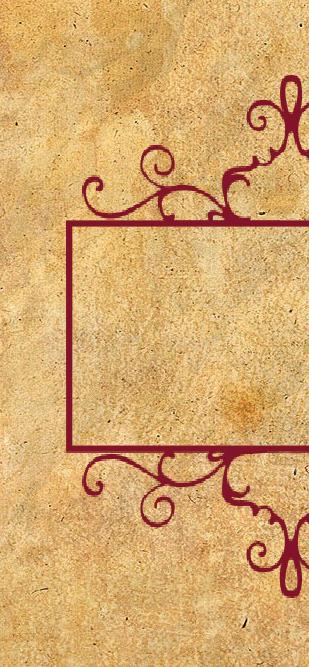




Pope Benedict has also made revitalising Europe’s Christian roots a centrepiece of his papacy and he is certain to encourage the Maltese to continue to hold fast to their Christian heritage and allow Christian values to inspire culture and politics.


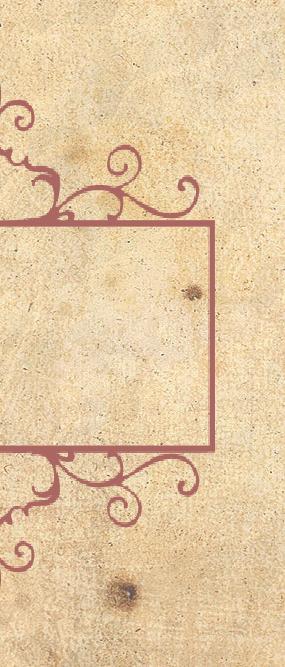

to be on people’s minds during the Pope’s visit.
Church leaders in Malta have said, “This is a moment of great humiliation for the entire church,” referring to revelations of the abuse of minors by priests and religious not only around the world, but in their own backyard.
Archbishop Paul Cremona of Malta and Bishop Mario Grech of Gozo co-signed a letter April 8 expressing the Church’s “grave sorrow and repentance toward all those who have been abused.”
To handle allegations of clerical sex abuse, the Church in Malta set up a response team headed by a retired judge in 1999.
A second team was established later that same year to expedite the investigations.

The two Bishops said everyone involved in a suspected case of abuse must come forward and also cooperate with civil authorities. Christians are called to speak the truth rather than “disguising facts or remaining silent,” they said.
According to The Associated Press, Malta’s response team has received 84 allegations of child abuse involving 25 priests since it was established.
Although it was not part of the official schedule, there is always the possibility Pope Benedict might meet privately with victims as he did on trips to the United States and Australia.
But Pope Benedict’s main plan in accepting the invitation to visit Malta was to make a biblical pilgrimage to the grotto where,

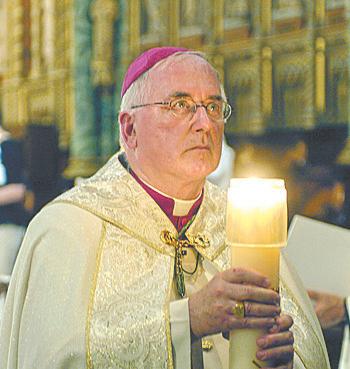
said, explaining that the teachings of Jesus, St Paul and St Ignatius have been rejected by modern culture.
“The war we fight as Christians will not end until the world ends,” he said, noting the struggle is not against “flesh-and-blood enemies

While there are strict provisions protecting the freedom of worship in Malta, Catholicism is the state religion. Some key civil laws reflect that tie: divorce and abortion are illegal in Malta and remain opposed by a majority of the population.
One government policy that the Church has taken issue with, however, is the problem of forced detention of many of the illegal immigrants who wash up in Malta on their way to other European countries.


according to tradition, the Apostle Paul chose to live during the three months he was shipwrecked on the island.
St Paul, the republic’s patron saint, will feature prominently on this journey - the Pope’s first of five scheduled foreign trips abroad this year. He is going to help commemorate the 1,950th anniversary of St Paul’s arrival, which also marks the birth of Christianity on this five-island Mediterranean nation situated between Sicily and North Africa.
The Gospel took hold and flourished, making Malta one of the most Catholic countries in the world. When Pope John Paul II visited in 1991, he said Malta’s full embrace of its Christian values should inspire the rest of Europe.
What to do with the thousands of immigrants who are fleeing wars, persecution or poverty is a hot political issue on the island.
All immigrants who are denied admission into Malta or who enter illegally are detained until they can be deported. Even asylum seekers and people who apply for refugee status remain in detention while their status is being determined. Detainees, which include children, may be kept for months in prisonlike centres with sometimes abysmal conditions.
Archbishop Cremona has said today’s immigrants and refugees should be welcomed just as St. Paul was in the first century.
In an interview earlier this year with the Vatican newspaper, L ’Osservatore Romano , the Archbishop said the Maltese demonstrated a “strong sense of openness toward someone who is ‘different,’ the foreigner” when they welcomed St Paul.
The Archbishop called on the Maltese to revive this attitude of acceptance and to eliminate prejudices, and treat immigrants first and foremost as people.
Fear driving euthanasia movement in ‘spiritual war’
but against spiritual forces of evil. There’s a combat we can’t deny, even if we foolishly remove every military reference in every hymnal in the interests of political correctness”.
Archbishop Prendergast spoke of the meditation Jesuit founder St. Ignatius of Loyola used to expose evil. Ignatius’ meditation asks the participant to consider the vastness of evil forces and how countless demons are stationed everywhere.
“This, I think, is contrary to our instincts,” he said. “We are good people. Nice people. Catholic people. Christian folks. Surely, Satan and his minions are busy with other people.”
The devil has become bolder as Western civilisation moves away from its Christian roots, the Archbishop said, noting how the Internet has provided “Satan weapons of mass destruction he did not possess before.”
Archbishop Prendergast urged the faithful to prepare an appropriate spiritual defense, calling on Ignatius’ insight that all vices could be traced to “three roots: riches, honour and pride.”
The desire for riches propels the Internet porn industry, he said. The pursuit of riches often leaves Catholics too exhausted to
go to Church “and almost always too tired to pray.”
Honour - which the Archbishop described as the desire to be held in high regardkeeps politicians from speaking their conscience, keeps journalists “toeing” a line of liberal respectability, and prevents Catholics from defending their faith when it is attacked, he said.
“Pride blinds us to our vulnerability and prevents us from turning to Christ the victor,” he said. “Instead we rely on ourselves, making excuses instead of amends.”
“Christ’s plan also has three pillars,” he said. “To counter riches, honour and pride, he attracts us to spiritual poverty, insults and humility.”
“What Ignatius calls poverty, other saints have called detachment. Whatever you call it, this virtue brings freedom from the shackles of materialism, luxury, and the fear of suffering, a fear, incidentally, that is leading good people to argue passionately for the ‘right’ to kill themselves,” he said.
Fear is not only driving the euthanasia movement but obscuring the truth about effective pain management in palliative care and hospice centres, he said.
VATICAN CITY - Christians are called to a nonviolent struggle for peace and justice, including the civil disobedience of laws that are morally wrong such as abortion, Pope Benedict XVI said.
“It is important for Christians to follow what is right, which is the foundation of peace,” he said on 1 April during the Chrism Mass in St Peter’s Basilica. “It is important for Christians to not accept a wrong that is enshrined in law - for example, the killing of innocent, unborn children,” said the Pope in his homily.
Presiding over the first of two Holy Thursday liturgies, Pope Benedict blessed the oils that will be used in the sacraments of Baptism, Confirmation, Ordination and the Anointing of the Sick.
He also led more than 1,500 priests and Bishops in a renewal of their ordination promises.
Deacons carried the oils in large silver urns to the main altar while catechumens, youths preparing for confirmation, the sick and deacons about to be ordained in the Diocese of Rome wheeled small tables carrying large, artistic urns, which also contained sacramental oils.
In his homily, the Pope said Christians must be a people of peace who understand that Christ’s death on the cross is a sign of reconciliation and love.
“Christ does not conquer through the sword, but through the cross. He wins by conquering hatred. He wins through the force of his greater love,” he said.
Christ wilfully succumbed to his torture and crucifixion, and the cross becomes his way of saying “no” to violence, the Pope said.
The Cross no longer symbolises death, but is a sign of God’s victory over violence through his selfgiving love, he said.
“As priests we are called, in fellowship with Jesus Christ, to be men of peace; we are called to oppose violence and to trust in the greater power of love,” the Pope

said. People of peace, however, are not inactive, he said; they have to be prepared for the nonviolent battle of upholding the truth and the good and of refusing to carry out evil.
Christians must be ready to suffer for the good and for God, he said.
Like the martyrs they must say “no” to injustice and refuse to take part in idolatry, “to bow down before falsehood, before the adoration of human persons and their power,” Pope Benedict said.
As good citizens, Christians follow the law and do what is just and good, but “they do not do whatever within the legal system in force is not just but unjust,” said the Pope.
The Pope also said God brings a kind of happiness that is more complete and powerful than the
kind of gladness that comes from entertainment and pursuits of pleasure.
While entertainment is good and it’s important to have laughter in one’s life, it is not everything, he said, and it can mask despair, dread or a disregard for one’s own life.
The happiness that comes from God gives people the strength to withstand suffering - either one’s own or that of others - and to come to the aid of others and “to express tangibly the light and the goodness of God,” the Pope said.
Pope Benedict then asked priests to pray that Christ’s gladness “may pervade us ever more deeply and that we may be capable of bringing it anew to a world in such urgent need of the joy that has its source in truth.”
Later in the day, the Pope
celebrated the Mass of the Lord’s Supper, which commemorates Jesus’ institution of the Eucharist and the priesthood - an act which marks the founding of the Church, he said.
In his homily at Rome’s Basilica of St John Lateran, the Pope asked that all Christians live in close communion with God so that unity may become a visible sign of God’s love for all the world to see.
During the evening Mass, Pope Benedict washed the feet of 12 priests from the Diocese of Rome. The ritual reflected the call to imitate Christ by serving one another and forgiving each other.
The Pope poured water from a golden pitcher onto the foot of each priest and then gently rubbed each foot dry with a white towel.
In his homily, the Pope said that after the Last Supper, Jesus asked his disciples to bring men and women to faith in God “and through faith, to love.”
Jesus wanted his followers to be in intimate communion with him and with the Father, the Pope said. He wanted fidelity to him to give rise to visible unity, which would become “a sign before the world and (help) to authenticate the mission of Jesus Christ,” the Pope said.
Jesus’ prayer for unity is a challenge to all Christians to undergo “a constant examination of conscience,” the Pope said.
People must ask themselves whether they are living in fellowship with God, the Pope said, “or are you rather living for yourself, and thus apart from faith?”
He said God is asking people whether they are “guilty of the inconsistency which obscures my mission in the world and prevents men and women from encountering God’s love?”
The Pope called on the faithful to meditate on Christ’s passion and “feel Jesus’ pain at the way that we contradict his prayer, that we resist his love, that we oppose the unity which should bear witness before the world to his mission.”
Donations collected during the Mass were earmarked for helping rebuild the major seminary in Port-au-Prince, Haiti, which was reduced to rubble by an earthquake on 12 January.

LOS ANGELES, California
(CNA) - Apple co-founder and CEO Steve Jobs has cited concerns about pornography on Apple iPhones as one reason the company disallows “unsigned” third-party software, unlike Google and its Android mobile operating system.
Speaking at a Q & A session on 8 April following a preview of iPhone Operating System 4.0, Jobs was asked if Apple has any intention of allowing “unsigned” applications to run on the iPhone.
According to Apple Insider, all third-party software must be approved by Apple for sale on the iTunes App Store.
Jobs responded to the question by noting that there is a “porn store” for competitor Google’s Android system.
“You can download it, your kids can download it,” he said, according to Apple Insider. “That’s a place we don’t want to go, so we’re not going to.”
The iTunes Store reportedly still sells applications for Playboy Magazine and other risqué established publications.
Men must rectify violence against women, says papal preacher
BY CAROL GLATZ Catholic News ServiceVATICAN CITY - All men must apologise for and rectify cultural and “pseudo-religious” prejudices and acts of violence against women, said the preacher of the papal household.
In his homily during the Good Friday liturgy of the Lord’s Passion in St Peter’s Basilica on 2 April, Capuchin Fr Raniero Cantalamessa focused on the Christian response to violence.
At the service, presided over by Pope Benedict XVI, Fr Cantalamessa said he did not want to talk about priestly sexual abuse and the scandal it has provoked, but he did so at the end of his homily.
Fr Cantalamessa mentioned recent criticism of the Church, the Pope and Catholics around the world.
While he did not specifically mention the issue of sexual abuse, it was obvious he was referring to the increase in criticism, especially in the media, of how the Church and Pope Benedict have handled past cases of priestly sexual abuse.
Fr Cantalamessa read a portion of a letter from an unnamed Jewish friend, who, the priest said, like many Jewish people, “knows from experience what it means to be a victim of collective violence.”
The letter condemned attacks against the Church, the Pope and the faithful; the use of stereotypes; and turning individual responsibilities and wrongdoings into a form of collective guilt, saying the current situation reminded the Jewish author of “the most shameful aspects of antiSemitism”.
In the main portion of his homily, Fr Cantalamessa
denounced continued violence and brutality in the world, calling it “an archaic leftover, a regression to primitive times.”
He listed some modern forms of violence including bullying in schools and violence in films, video games and the media.
“However, there is a form of violence that is even more serious and widespread than that by young people in sports stadiums and (violent demonstrations) in public squares,” he said.
“I am not speaking here of violence against children, concerning which even some members of clergy are wretchedly guilty.”
Fr Cantalamessa said, “I am talking about violence against women,” adding that there was already “sufficient talk outside of here” concerning the sexual abuse of minors by priests.
Abused women “find themselves desperately alone and defenseless. Only today, thanks to the support
and encouragement of so many associations and institutions, some find the strength to come out in the open and denounce the guilty,” he said.
Violence against women is particularly serious as it often happens hidden inside homes, unknown to others; and the brutality is even justified “with pseudo-religious and cultural prejudices,” he said.
When God admonished Eve after the fall in the Garden of Eden and said that her husband “shall be your master,” Fr Cantalamessa said God’s words were “a bitter prediction, not authorisation” or consent of aggression.
When God created men, he did not give them “the right to get angry and bang your fists on the table over every little thing,” he said.
He recalled how Pope John Paul II established a practice of asking forgiveness for collective wrongs.
Of the collective pardons that
should be made, one of “the most just and necessary is the pardon that half of humanity must ask for from the other half - men to women,” he said.
These apologies must not be “generic or abstract,” but must lead to real conversion and concrete gestures of reconciliation within families and society, he said.
Fr Cantalamessa said, Christ’s passion and crucifixion are signs that violence has been conquered and that it has been overcome with “a new kind of victory that does not consist in making victims, but in making oneself a victim,” he said.
Pope Benedict began the liturgy by kneeling in front of the altar in silent prayer.
After Fr Cantalamessa’s sermon he slowly untied a red cloth to reveal the crucified Christ on a large wooden cross that he held up for adoration. He then removed his shoes to kneel before and venerate the cross in front of the altar.
VATICAN CITY - Los Angeles has a new coadjutor Archbishop, who is the only US Bishop who was ordained for or incardinated in the Prelature of Opus Dei.
With a Catholic population of 4.6 million, the Archdiocese of Los Angeles is one of the largest dioceses in the world, and when Archbishop Jose H Gomez succeeds Cardinal Roger M Mahony it will be the most populous diocese headed by an Opus Dei member.
Cardinal Mahony, who is 74, currently heads the Archdiocese. As coadjutor, Archbishop Gomez, 58, automatically becomes head of the Archdiocese upon Cardinal Mahony’s retirement or death.
The Cardinal will turn 75 next February, the age at which Bishops are required by canon law to submit their resignation to the Pope.
Archbishop Gomez is one of 22 Opus Dei bishops around the world, although like any priest, once a member becomes a Bishop, he answers directly to the Pope and no longer to his Bishop or religious superior.
An additional 22 Bishops belong to the Priestly Society of the Holy Cross, an association of diocesan clergy associated with Opus Dei. Members include four Bishops in the United States: Archbishop John J. Myers of Newark, New Jersey; Bishop Robert W Finn of Kansas City-St Joseph, Missouri; Bishop Nicholas DiMarzio of Brooklyn, New York; and Bishop John O Barres of Allentown, Pennsylvania, said Marc Carroggio, an Opus Dei spokesman.

Christian mission to evangelise. Most of the 78 footnotes were references to Bible passages or to the Catechism of the Catholic Church, but one was to a homily by St Josemaria Escriva.
St Josemaria Escriva de Balaguer founded Opus Dei, Latin for “work of God,” in Spain in 1928 to promote holiness of life and the transformation of society through the professional work of its members, the vast majority of whom are lay people. He founded the Priestly Society of the Holy Cross in 1943 to share his message with diocesan clergy and provide them with spiritual assistance in their personal lives, Carroggio said. According to the Vatican’s 2010 yearbook, the Prelature of Opus Dei has more than 87,500 lay members, almost 2,000 priests and 337 seminarians.
In February Archbishop Gomez issued a 21-page pastoral letter, You Will Be My Witnesses, on the
Archbishop Gomez wrote: “My approach and understanding of these matters owes a great deal to my appreciation of the spirituality of St Josemaria Escriva. I continue to find St Josemaria’s teachings on sanctity and apostolate to be both profound and practical.”
The Archbishop quoted the saint as saying: “Whoever said that to speak about Christ and to spread his doctrine, you need to do anything unusual or remarkable? Just live your ordinary life; work at your job, trying to fulfill the duties of your state in life, doing your job, your professional work properly, improving, getting better each day. Be loyal; be understanding with others and demanding on yourself.”
Jose Horacio Gomez was born in Monterrey, Mexico on 26 December 1951. He attended the
National University of Mexico, where he earned a Bachelor’s degree in accounting.
In college he joined Opus Dei, an institution founded by St Josemaria to help people turn their work and daily activities into occasions for growing closer to God, serving others and improving society. Opus Dei became a personal prelature in 1982.
Archbishop Gomez studied theology in Rome and at the University of Navarre in Spain, where he earned a Bachelor’s degree in theology and a doctorate in moral theology. He was ordained a priest of Opus Dei on 15 August 1978 in Torreciudad, Spain. After ordination he pursued pastoral work with college and high school students in Spain and Mexico.
In 1987, he was sent to what was then the Diocese of GalvestonHouston to minister for Opus Dei in several capacities in Texas. He became a US citizen in 1995.
Then-Fr Gomez was president of the National Association of Hispanic Priests from 1995-99,
then its executive director from 1999-2001. He was treasurer of the National Catholic Council of Hispanic Ministry, 1998-2001.
In 1999, he became the vicar of Opus Dei for the state of Texas. Pope John Paul II named him a Denver Auxiliary Bishop in January 2001.
Cardinal Mahony has been Archbishop of Los Angeles for almost 25 years. Appointed in July 1985, he was installed in September of that year. He was elevated to the College of Cardinals in June 1991.
A year after being named to Los Angeles, then-Archbishop Mahony created five pastoral regions to better minister to the 4.2 million Catholics in the Archdiocese. He has overseen the construction of one of the largest Catholic churches in the US - the Cathedral of Our Lady of the Angels, which was dedicated in 2002. Shortly after the 1994 Northridge earthquake damaged the Cathedral of St Vibiana beyond repair, he announced plans to replace it with a new Cathedral.
During his tenure, the Cardinal has been a national leader in advocating for the US Congress to pass comprehensive immigration reform. He has served as chairman of the Bishops’ doctrine committee and currently is consultant to the divine worship, migration and prolife activities committees.
Born in Hollywood, California, Cardinal Mahony is the first native Angeleno and the third Archbishop of Los Angeles to be made a Cardinal. From 1980-85 he was Bishop of Stockton, California, and prior to that he was an Auxiliary Bishop of the Diocese of Fresno, California.
The Los Angeles Archdiocese covers about 8,800 square miles.
It has a total population of 11.6 million; 4.2 million people, or 36 per cent, are Catholic.
Mass is only long, boring because one’s love is short
Opus Dei Bishop encourages those blasé about Mass to rediscover a love for the Eucharist and, in doing so, for Jesus Christ Himself
BY JESÚS COLINA Zenit.orgROME - Holy Mass is about love, Bishop Javier Echevarría Rodríguez, prelate of Opus Dei, said, advising those who are sometimes bored by the Eucharistic celebration.
Bishop Echevarría, who together with Bishop Alvaro del Portillo was the person closest to Opus Dei founder St Josemaría Escrivá de Balaguer, has dedicated his latest book, Living the Holy Mass, to this Sacrament of the Eucharist.
Bishop Echevarría is a member of the Vatican’s Congregation for Saints’ Causes and the Supreme Court of the Apostolic Signature; he is a consultor for the Congregation for the Clergy and an honorary member of the Pontifical Academy of St Thomas Aquinas. His book is an attempt to rediscover love for the Eucharist, “which must be the centre of our life,” he explained in an interview with Zenit last week.
“I would recommend that they
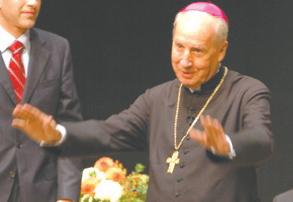
participate with sincerity in the Mass, seeking and loving Jesus,” Bishop Echevarría said.
“In ‘The Way’, St Josemaría wrote: ‘You say the Mass is long and, I add, because your love is short’.”
Feelings, he said, must not be given too much importance in the Mass, like enthusiasm or apathy, desire or lack of it. “The Mass is sacrifice: Christ gives Himself out of love,” he said. “It is an action of God and we cannot fully understand its grandeur, because of our limited condition as creatures.
“But we must make the effort, not only to be at Mass, but to live it in union with Christ and the Church.”
The Liturgy of the Word and the Eucharistic liturgy, he said, help to maintain conversation with God during the day.
“We should always be ever more astonished before this reality that surpasses us, but in which the Lord allows us to participate, better said, invites us to participate,” he said.
In the Mass, he said, not only is a “descendent communication” of the redeeming gift of God fulfilled, but also an “ascendant mediation,
man’s offering of himself to God: his work, his sufferings, his griefs and his joys, everything is united to Christ - through Him, with Him and in Him”.
He said that the Opus Dei founder had a deep and profound impact on him when he celebrated the Holy Sacrifice, and on contemplating his daily Eucharistic devotion.
“It profoundly moves us to think that in the presentation of the gifts, the priest asks God to accept the bread and wine, which are ‘fruit of the earth (or of the vine) and the work of men’,” Bishop Echevarría said.
Man can offer his work, he said, in any circumstance to God, but in the Mass, that offer reaches its full meaning and value, because Christ unites it to His sacrifice, which He offers to the Father for the salvation of men.
When the Mass is the centre and root of the Christian’s day, when all his tasks are oriented to the Eucharistic sacrifice, it can be affirmed that his whole day is a Mass and that his place of work is an altar, where he gives himself fully to God as His beloved son, the prelate said.
He said that Pope Benedict XVI’s emphasis on the enormity of the sacrament is “especially important” at this time, including his insistence that the liturgy is God’s action and, “as such, it is received in the continuity of the Church”.
Bishop Echevarría noted that
Pope Benedict has written that the best catechesis on the Eucharist is the Eucharist itself well celebrated.
“Therefore, the first duty of piety for the priest who celebrates or for the faithful who participate in the Mass is the attentive, devout observance of the liturgical prescriptions: the obedience of pietas,” Bishop Echevarría said.
“The Pope also insists that the Eucharist is the heart of the Church: God present on the altar, the close God, builds the Church, congregates the faithful and sends them to all men.”
Asked of what he remembers of St Josemaría’s attitude towards the Eucharist and what role it had in his day, the Bishop recalled that the saint was conscious of the fact that in the Mass, the protagonist is Jesus Christ, not the minister, and that the faithful fulfilment of the prescriptions enables the priest to “disappear,” so that Jesus alone shines.
“Many people who attended his Mass - also in the difficult circumstances of the Spanish Civil War - commented later that his way of celebrating Mass had something that moved them profoundly, and that they felt invited to grow in their devotion to the Holy Sacrifice,” Bishop Echevarría said. “I am convinced that what moved those who participatedthose of us who participated - in his Mass was precisely that: that he let Christ appear and not his person.”
Benedict XVI
BY CINDY WOODEN Catholic News ServiceVATICAN CITY - Pope John Paul II was a model of untiring love for God and for all men and women, Pope Benedict XVI said as he celebrated a memorial Mass for his predecessor.
“The entire life of the venerable John Paul II unfolded under the sign of this love, this ability to give himself generously without reserve, without measure and without calculation,” Pope Benedict said on 29 March during his homily at the Mass in St Peter’s Basilica. The Mass was celebrated in advance of the fifth anniversary of Pope John Paul’s death on 2 April, because the date fell on Good Friday this year.
Using the Mass readings for 29 March, Pope Benedict said Pope John Paul had many of the same traits as the “suffering servant” described in the reading from the Book of Isaiah.
“The servant acts with indestructible firmness, with an energy that does not lessen until he has realised the task he was assigned,” Pope Benedict said. “He presents himself with the strength of his convictions and it will be the Holy Spirit that God places in him who gives him the ability to act with meekness and strength, assuring his success in the end.
“That which the inspired prophet says can be applied to our beloved John Paul II: the Lord called him to His service and, entrusting him with increasingly greater responsibility, accompanied him with His grace and His constant assistance.”
“During his long pontificate, he did all he could to proclaim justice with firmness, without weakness or hesitation, especially when he faced resistance, hostility and refusal,” the Pope said.
Pope Benedict said that his predecessor knew he was being led by God “and this allowed him to exercise a
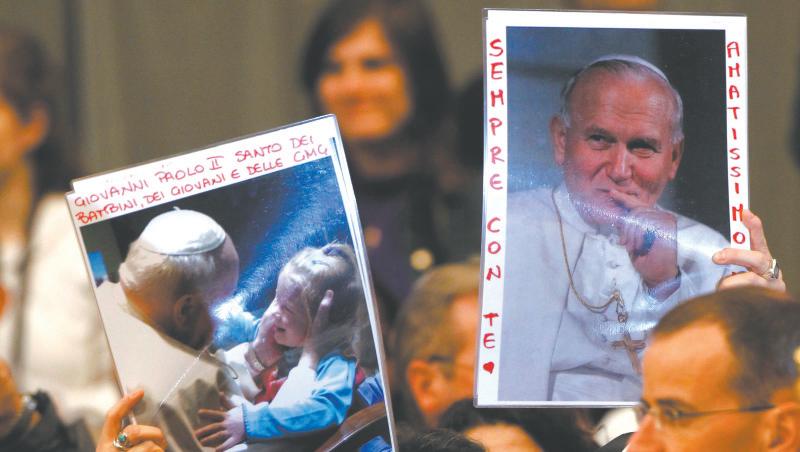
very fruitful ministry, for which, once again, we give fervid thanks to God.” The Pope also spoke about the Gospel story of Mary of Bethany anointing the feet of Jesus with perfumed oil. The gesture, he said, was an expression of faith and great love, an offering of profound devotion and of giving a great gift without thinking of the cost.
“Love does not calculate, does not measure, does not count the cost and does not erect barriers, but knows how to give with joy, seeks only the good of the other and overcomes pettiness, stinginess, grudges and the closure that men sometimes carry in their hearts,” the Pope said.
Pope John Paul demonstrated the same kind of love, he said.
“That which motivated him was love for Christ, to whom he had consecrated his life, a love that was superabundant and unconditional,” the Pope said.
Pope Benedict said Pope John Paul was sure about God’s goodness and that certainty accompanied him throughout his life and marked the end of his life in a particular way.
“In fact, his progressive physical weakness never dented his rock-solid faith, his shining hope, his fervent love,” the Pope said.
“He let himself be used up for Christ, for the Church and for the whole
world; his was a suffering lived for love and with love until the very end,” Pope Benedict said.
Pope Benedict also read a paragraph of his homily in Polish, urging the Polish people to transform their pride in Pope John Paul into a commitment to following his example of faith, hope and love.
After weeks of increasingly tough questions about Pope Benedict’s role in handling accusations of sex abuse against clergy, the Mass included a prayer in German that he would continue to minister “with persevering meekness and firmness.” The prayers of the faithful also included a petition in Polish for Pope John Paul, “who served the Church to the extreme limits of his strength.”
During the Mass, Pope Benedict did not mention Pope John Paul’s sainthood cause. In December, he formally decreed that Pope John Paul had heroically lived the Christian virtues and was venerable.
Before Pope John Paul can be beatified, the Pope also must sign a decree recognising a miracle attributed to the late Pope’s intervention.
The reported healing of a French nun suffering from Parkinson’s disease is still being investigated by a team of physicians and theologians.
John Paul II’s tomb now one of Rome’s most visited sites
BY CARMEN ELENA V ILLA Zenit.orgVATICAN CITY - Since 2005 when Pope John Paul II passed away, the Vatican grottoes where his tomb is found has become one of the most frequented tourist sites in Rome.
Officials at St Peter’s Basilica told Zenit that an average of 12,000 people visit the tomb each day. It’s open to the public from 9am to 5pm (6 in the summer). Many pontiffs rest near John Paul II, not least on the list, the first Pontiff ever: St Peter.
An announcer in several languages calls visitors to silence and recollection, reminding them that the place is sacred.
The entrance to the grottoes is made from the right of St Peter’s. Tourists descending the stairs will also see remains of columns from the first basilica, built under Constantine in the years 326-333. They will come across the tomb

ROME (CNS) - The Shroud of Turin was hidden in an Italian Benedictine abbey during World War II in part because Church authorities feared Adolf Hitler might want to steal it, according to an official at the monastery.
The Shroud, which many believe to have been the burial cloth of Christ, was transferred secretly from the Turin Cathedral in 1939 to the abbey of Montevergine in southern Italy, and returned to Turin in 1946, after the war had ended.
Officially, the reason later given for the transfer was fear that the cloth could have been damaged if the city of Turin were bombed. But Benedictine Fr Andrea Cardin, director of the Montevergine library that holds the relevant documents, said Church officials also seemed to fear that the Nazis wanted to take possession of the Shroud.
Already in 1938, Church leaders were alarmed when, during a visit by Hitler to Italy, Nazi officials asked unusual and persistent questions about the Shroud and its custody, Fr Cardin said in an interview published in April by the Italian magazine Diva e Donna
That worried the Vatican as well as the Italian royal family, the Savoys, who at the time were the owners of the Shroud, Fr Cardin said. Hitler was thought by some to have been obsessed about certain objects related to the life of Christ, including the Holy Grail and the Holy Lance of Longinus.
The Savoy family wanted the Vatican to take the Shroud during the war, but Pope Pius XII thought that was not a good idea. Instead, in near total secrecy, the Vatican arranged for the cloth to be brought first to Rome and then to the Montevergine abbey near Avellino, where it was hidden under the main altar.
In 1943, as fighting raged in southern Italy, Nazi soldiers arrived at Montevergine and conducted a thorough search of the abbey premises. The monks withdrew in prayer around the altar and a Nazi official gave the order not to disturb them. “In this way, the holy relic was not discovered,” Fr Cardin said.
The Shroud, which bears the image of an apparently crucified man, goes on display from 10 April-23 May in the Turin Cathedral where it is kept permanently. The Italian monarchy was abolished in Italy in 1946 and the Shroud was formally given to the Vatican in 1983.
even from

of Callistus III and then the tombs of Boniface VIII, Nicholas III, Innocence VII, Nicholas V, Paul II, Paul VI, Marcellus II, John Paul I and Innocence IX.
Some of the tombs show the image of the Pope buried there -
the same images that can be seen in St Paul Outside the Walls, which is adorned with the portraits of the unbroken line of 266 Popes.
In a recent visit to the tomb, this correspondent noted that the great majority arrive specifically to find
John Paul II’s resting place. Others, particularly older visitors, pause before the tombs of Paul VI and John Paul I.
Some ask where John XXIII is found (since 2002, his resting place is in the basilica. John Paul II now rests where the Good Pope’s tomb used to lie).
There is always a guard at John Paul II’s tomb. He asks those who want to pause in prayer to move back to a roped-off space, leaving the passageway clear.
Many come to leave flowers, Rosaries, medals and other sacred items. Some just look with curiosity.
“Since John Paul II died, we’ve had to organise everything differently, due to the number of pilgrims who come every day from around the world,” a custodian of the tomb explained to Zenit. “There is not a single day in which a multitude doesn’t come.”
Previously, access to the grottoes was from within the basilica itself. There weren’t clear signs and few descended. Today, pilgrims come asking how to find the remains of the Polish Pope.
“I loved seeing it because this is the first time I’ve been here,” one
pilgrim from Spain told Zenit, just after visiting the tomb. “I’ve always read and heard about him and I liked him a lot and it has moved me to see where he is buried. I loved the atmosphere and the attitudes of the people.”
Another Spanish pilgrim said that seeing the tomb was one of his principal goals in coming to Rome.
“I admire his simplicity and closeness with the people,” he said. “It was too bad when he died because he was so important, because he left a mark in the history of Christianity and also in the history of the world.”
An Argentinean pilgrim affirmed that she was excited to visit his resting place. “Seeing the tomb of John Paul II, the memory of his life came to my mind. He was a very simple person, human, close. It was a great sadness when he died, even though the Pope we now have is also a marvellous person.”
So, amid the sacred music always playing in this space so as to favour recollection, the pilgrims recall and thank that pontiff, accompanied by the prayers of tens of thousands of faithful in St Peter’s Square.
WASHINGTON - Travelling along the dusty roads in the mountains southwest of the Haitian capital of Port-au-Prince, Maryland engineer Larry Newman tried to imagine what the future might hold for thousands of Haitians left homeless by January’s massive earthquake.
Newman’s focus was on helping Haitians regain a sense of belonging and comfort.
With guidance from the Haitian Catholic Bishops’ conference, the way to do that, it was suggested, was through their parishes.
The question remained: How?
“The whole idea is to re-establish the Church as community down here,” Newman told CNS by phone on 8 April as he travelled from Port-au-Prince to the coastal community of Jacmel to the south as part of a week long trip to assess local needs.
“The Bishops are trying to guide us in terms of where they think the Church needs to rebuild.”
Newman, president of Spatial Systems Associates Inc in Columbia, Maryland, was among a group of representatives from the US Conference of Catholic Bishops, including Bishop Thomas G Wenski of Orlando, Florida,
Catholic Relief Services and the Haitian Bishops’ conference travelling throughout the earthquakeravaged region of the Caribbean nation.
The entourage was in Haiti the week of 5 April and visited several parish sites identified as key locales in Port-au-Prince, Leogane, Jacmel and the nearby mountain villages near the epicentre of the magnitude 7 quake southwest of the capital.
In each case, little of a church or school remained standing, but a significant parish community remained where local priests continue their ministry and celebrate Mass regularly under tarps or in the open.
The visit was arranged by the Haiti Advisory Group of the US Bishops’ Subcommittee on the Church in Latin America.
The advisory group has been working since shortly after the earthquake on ways to best meet the needs of the Church and the Haitian people.
“Part of our visit is to get an onthe-ground impression of the challenges of the Church and rebuilding its infrastructure,” Bishop Wenski explained to CNS in an interview from Haiti on 8 April.
“We hope that this fact-gathering mission will enable us to more strategically place our very limited resources.”
Those resources include US$60 million raised in special collections in US parishes since January.
While the amount sounds significant, it’s far short of the amount the Haitian Church needs
High levels of religious participation suggest Haiti’s faith communities could be important for mobilizing rebuilding efforts following the country’s devastating earthquake.
Have you attended a place of worship or religious service within the last seven days?
yes no
to rebuild the large numbers of churches, parish centres, chapels and Church-run schools severely damaged or destroyed by the quake, said Oblate Fr Andrew Small, director of the Collection for the Church in Latin America for the US Bishops.
To get some rebuilding under way, the advisory group drafted a proposal that concludes that parishes are centres of community life, Fr Small explained.
The proposal was prepared in cooperation with the Haitian Bishops’ conference and
Archbishop Bernardito Auza, papal Nuncio to Haiti. While not a formal reconstruction plan, the document offers a basic framework through which the US and Haitian Churches can begin to address the massive reconstruction needs of parishes in the earthquake zone.
The idea is to get several key parishes up and running as quickly as possible and to get schools functioning so young people can begin to experience some normalcy in their lives and where people can gather in a safe place in weather emergencies, the document said.
“This is about gaining momentum focused on Church communities which have been battered and decimated and also imperilled as far as the living of the faith is concerned,” Fr Small told CNS.
The proposal also calls for each construction project to be similar in design so each parish or chapel site can be completed quickly and without massive re-engineering.
Haitians would be hired under the “cash for work” concept to build the structures in each community. For Newman, who has worked for several years with CRS to digitally map its project sites, the destruction caused by the earthquake was beyond comparison with anything he has ever seen.
“A lot of (the destruction) we’re seeing down here is a result of the construction techniques that have been used over the years in the absence of building codes,” he said.
“One of the things the Church wants to make sure is that what gets rebuilt is rebuilt to international standards.”
PORT-AU-PRINCE, HaitiJoel Samson showed up for Mass early Easter morning at what’s left of Our Lady of the Assumption Cathedral in the centre of the Haitian capital, just has he has on most Sundays for the last 16 years.
Joining about 250 faithful who gathered for the liturgy under a large white tarp in front of what was perhaps Haiti’s best-known landmark to celebrate Christ’s Resurrection, Samson, 26, looked at the rose-coloured walls of the Cathedral.
It was hardly the church he has always known.
“Before the earthquake, it was nice, really beautiful,” Samson said of the Cathedral. “But after what happened on 12 January, everything has become bad inside. There’s not even a seat for people.”
The destruction of the cathedral symbolised the suffering of Good Friday to many of the worshippers. For them, suffering was nothing new.
Haiti is the poorest nation in the Western Hemisphere.
Throughout its history, despotic rulers have pillaged government structures and confiscated foreign aid for their own use.
Up to 80 per cent of people remain unemployed today.

On top of it all, the earthquake claimed 230,000 lives and left more than one million people homeless.
On Easter, Samson and the others gathered, praying that their country would experience its own resurrection and renewal.
Samson has many friends among the Cathedral chorus.
At 150 members, the chorus
was the Cathedral’s largest choir. But one-third of them perished in the earthquake. Loss is pervasive. Choir member Joincent Bon Ami’s three children died in the earthquake. He said he still needs much more help to put his life back together. Yet, as the choir marched from the broken church to the white tent for Mass, he smiled broadly
in his white robe and red sash.
“I always liked this church because this church makes me complete,” he said, “I have the strength and I believe God can (change things here).”
“They have joy. It’s the moment when we can hope,” observed Fr Glandas Marie Erick Toussaint, a priest assigned to the Cathedral.
“We must say hello to hope
because everything is not finished after 12 January. We have joy and life to start over.”
During the homily at Mass, it was as if the clergy went to extra lengths to emphasize themes of hope and renewal.
Auxiliary Bishop Joseph Lafontant, apostolic administrator of the Archdiocese of Port-auPrince, spoke of liberation and the hope that comes after suffering, emphasising that those who are living must continue on in spite of the challenges posed by the earthquake.
“It was a good message,” said Madame Solange Amelise, a lifelong member of the Cathedral parish. “Jesus is risen, so of course I have hope.”
Hope for herself and for the rebuilding of a new Cathedral as well as for a new Haiti.
“This is our mother church, the mother of Port-au-Prince,” said Wesley Pierre, his grizzled white hair pressed close on his head.
“We can rebuild it in a little while,” he said.
But Fr Toussaint said building a new cathedral will be complicated and largely out of the hands of parishioners.
“The plans to rebuild start first with the government and the Church authorities,” he said.
“Is the government going to reconstruct the city where it is and the Cathedral where it is?”
Those are questions too far from the heart and mind of the elderly Pierre, who on Easter morning shared one simple thought.
“Even though the earthquake crushed the Cathedral,” he said, “I will always love it.”
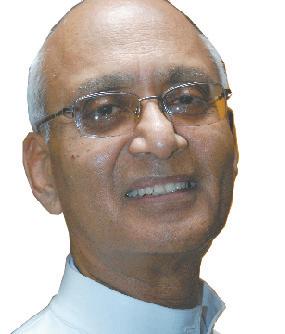
renowned Blessed Sacrament Father continues his series for The Record on the Eucharist in this, the Year for Priests
Having reviewed the first action of Jesus, we take up the second: “He said the blessing.” This phrase refers to the special kind of Jewish prayer called Berakah. Habituated to frequent sacrifices, the Jews found themselves at a total loss during the Babylonian captivity, where they were without Temple, Prophet, Priest, sacrifice or any other means of approaching Yahweh (Dan 3:37-40). They overcame this serious deprivation by resorting to prayers of praise to Yahweh recalling his past deeds and his present goodness to them in spite of their failings. These berakoth were later termed, ‘the sacrifice of praise’ since they enabled the people to effectively ‘commune’ with God.
Since the exile, every devout Jew was expected to make at least a hundred berakoth each day, praising God for every incident of his life, good or bad. Special Format
As they got more adept in praying the Berakah, they gave it a definite shape comprising four steps:
1 Invitation – ‘Come praise the Lord, all you servants of the Lord’, ‘Bless the Lord, O my soul; let all that is within me bless his holy name…’
2 Reasons – ‘O give thanks to the Lord for he is good…’
3 The praise itself - ‘You cause the grass to grow for the cattle…’
4 Concluding burst of praise - ‘Blessed be God, forever.’
We note that praise indicates a selfless extolling of God’s good qualities as such and is different from thanksgiving for favours received. In praise, we focus on God’s qualities without reference to ourselves – his goodness in Himself. Whereas in thanksgiving we thank him for his favours. It is not easy to make a prayer of pure praise, primarily because we are absorbed in ourselves. It takes great spiritual growth to selflessly praise God for Himself, even when we haven’t specifically benefited from his goodness. Jesus Himself prayed the berakah prayer several times, eg at the grave of Lazarus (Jn 11:41-42), or, when the Disciples returned after their trial mission (Lk10:21-22).
However, Jesus did not always tie himself down to the pattern mentioned above yet kept the basic elements of the prayer whenever he used this form.
In the Eucharist, the berakah pattern is seen in the Eucharistic Prayer that begins with the dialogue of the Preface – a call to praise. In the Preface itself we have various reasons listed, followed by the praise itself in the Eucharistic Prayer.
To get the maximum benefit of this prayer one would need to elaborate on each of these points and perhaps even personalise them. The greatest reason we have for praising God is recalled in the Institution Narrative, viz that Christ freely chose to die out of love for us.
A burst of grateful praise follows this narration in the Memorial Acclamation. After recalling further aspects of Christ’s self-gift, especially his resurrection, ascension and sending of the Spirit, we move into the “tefillah” or intercessions.
These express our firm belief that God will continue to bless us as he has in the past and so with supreme confidence we place our needs before him. The final burst of praise is seen in the Doxology, especially when it is sung together with the Great Amen. As we repeatedly yet consciously and gratefully enter into the praise dynamic of the Eucharist, it develops in us the art and habit of praising and thanking God at every moment.
Even without our being aware of it we become grateful people, deeply conscious of our giftedness before the Lord, ever ready to share his blessings with others.
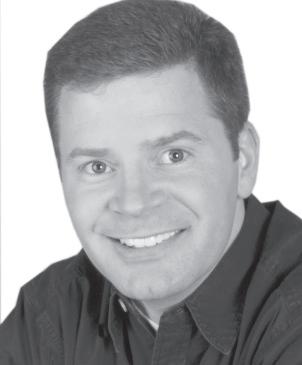
In a recent washingtonpost.com article entitled Catholic Girls Gone Wild? (1 March, 2010), Patrick J Reilly, president and founder of the Cardinal Newman Society, reported a disturbing trend among women attending Catholic colleges. It seems that statistics on the casual “hook up” – sex without any expectation of a relationship – are rising among women at Catholic campuses.
Reilly writes: “Researchers from Mississippi State University considered a survey of 1,000 college students nationwide and were surprised to find that ‘women attending colleges and universities affiliated with the Catholic Church are almost four times as likely to have participated in “hooking up” compared to women at secular schools.’”
Why should this be the case?
Broadening the question, why is it that so many young people raised in Catholic homes end up throwing their morals away when they reach college?
I’m sure there are many factors. One major one, I believe, is the way many of these young people have been raised to think of the Catholic faith, especially concerning the topics of human freedom and human sexuality.
The Church has a glorious and incredibly joyful song to sing to the world about freedom and love (it is known as the Song of Songs!). But, in my experience with Catholic audiences around the world, it is easy to observe that few Catholics are “in tune” with
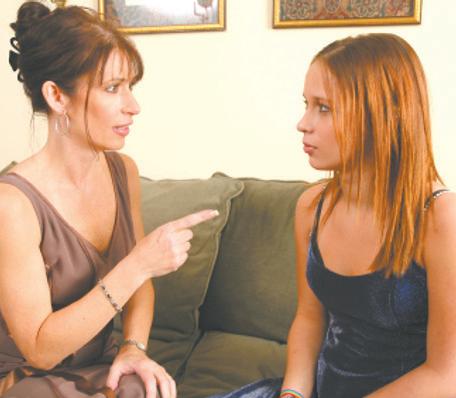
this joyful song. Understandably. As anyone who attempts to sing with the Church can attest, it ain’t easy. In our attempts to hit the right notes, we often go sharp or flat.
On the “flat” side, we have countless adult Catholics who were not raised with correct Catholic teaching at all, other than perhaps to scorn it. They usually grow up embracing a “do what you will” moral relativism.
On the “sharp” side, however, we have a great many Catholics who may have received “technically correct” teaching, but in a very dry, sterile and imposing way. The “flat” way promotes freedom without respect for truth. But the “sharp” way promotes truth without respect for freedom.
Respect for the freedom of the person in religious and moral matters – by this we mean not imposing the good by force, but proposing it in its full beauty and inviting others to embrace it – is a key teaching of the Catholic Church (see “Freedom” in the index of the Catechism of the Catholic Church).
As I wrote in my book Theology of the Body Explained (Pauline): “How often have children, educated in the faith, rejected it as adults because their teachers – whether parents, pastors, or others – tended to impose religion upon them without respect for and education in authentic human freedom?
Freedom must be challenged to submit itself to truth, but no-one can be
forced to accept the truth without doing violence to the dignity of the person” (p 57).
In the case of raising children in the faith, it is certainly proper for parents to provide structures and rules for their children in helping them make moral decisions.
However, as Pope Benedict XVI makes clear in his encyclical Spe Salvi (“Saved in Hope”), moral decisions “can never simply be made for us in advance by others – if that were the case, we would no longer be free.” Moral wellbeing “can never be guaranteed simply through structures alone, however good they are. Such structures are not only important, but necessary; yet they cannot and must not marginalise human freedom” (24).
Parents have the delicate task, especially in the teen years, of learning how to honour their children’s freedom –even when they choose wrongly. As John Paul II stated, “[P]eople have a right to their liberties, even if they make mistakes in exercising them” (cited by George Weigel in Witness to Hope, p 533). When we impose the good without respect for and education in authentic freedom, we actually contribute to the dynamic of rebellion in our children that often leads to college “wildness.”
This is why the Pontifical Council for the Family calls parents to “recognise the fragment of truth that may be present in some forms of [their children’s] rebellion” (Truth and Meaning of Human Sexuality, 50).
Educating our children in the moral vision of the Church is not about imposing rules upon them.
If this is our approach, we shouldn’t be surprised to discover that when the cat’s away, the mice will play.
Rather, we should be teaching our children the full splendour of the Church’s love song. When we do this, the Church’s teaching doesn’t need to be imposed. We naturally long to join in the glorious music.
 By Fr John Flader
By Fr John Flader
I have two questions about the Stations of the Cross. When I make the Stations on my own, are there any set prayers I must use? And what must I do in order to gain whatever indulgences are attached to the Stations?
I am sure many people wonder about the matters you have raised.
The first thing to remember about the Stations of the Cross is that this traditional devotion does not form part of the liturgy of the Church.
The liturgy is the Church’s official forms of worshipping God. It includes the Mass, the Sacraments, funeral rites, Exposition and Benediction of the Blessed Sacrament, etc. In all of these forms of worship there is an official rite or set of prayers approved by the Church which must be followed.
Since the Stations of the Cross are not part of the liturgy, there is no official rite for them. As I mentioned in an earlier column, the Church has approved the devotion of the Stations and has recommended the traditional 14 Stations, but there are no official prayers that must be said. Over the years, various saints and others have composed prayers and
reflections on the different Stations that the faithful have found helpful. Some of them, like the Stations of St Alphonsus Liguori and those of St Josemaría Escrivá, have proven especially popular.
When parishes and other groups do the Stations together, they usually choose one or another of the many published versions. These usually begin with the announcement of the Station, followed by the prayer “We adore you O Christ and we bless you”, which is answered by “Because by your holy Cross you have redeemed the world”. Then a reflection on the Station is read, which may include a prayer, after which an Our Father, Hail Mary and Glory be are said by all.
When someone does the Stations on their own, they are free to reflect on the Stations in whichever way they prefer. Many people will have a booklet with a version they like, and will say the same prayers that would be used by a group.
Others may prefer to read only the reflection, followed by their own prayers, or simply to meditate silently on each Station.
Since the Stations are a matter of popular piety, each person can live the devotion in the way that most suits them. As regards your second question, over the centuries the Church has granted numerous indulgences for those who make the Stations of the Cross. Indulgences were first granted for those who made the Stations in Jerusalem itself, but later they were extended to the devotion done wherever the Stations were erected in churches throughout the world.
At the present time, according to the fourth edition of the Enchiridion
Indulgentiarum, or list of indulgences, published in 1999, a plenary indulgence is granted under the usual conditions (cf J Flader, Question Time, Connor Court 2008, n. 81) for those who make the Stations of the Cross.
In order to gain the indulgence the following norms must be observed.
The pious exercise must be made before Stations of the Cross legitimately erected. For the erection of the Stations 14 crosses are required, to which it is customary to add 14 pictures or images, which represent the Stations of Jerusalem.
According to the more common practice, the pious exercise consists of 14 pious readings, to which some vocal prayers are added. However, nothing more is required than a pious meditation on the Passion and Death of the Lord, which need not be a particular consideration of the individual mysteries of the Stations.
A movement from one Station to the next is required. But if the pious exercise is made publicly and if it is not possible for all taking part to go in an orderly way from Station to Station, it suffices if at least the one leading the exercise goes from Station to Station, the others remaining in their place.
Those who are legitimately impeded can gain the same indulgence if they spend at least some time, for example a quarter of an hour, in pious reading and meditation on the Passion and Death of our Lord.
The Church, by granting a plenary indulgence for this devotion, is obviously encouraging the faithful to practise it regularly. It is truly a source of many blessings.
Panorama entries must be in by 12pm Monday.
Contributions may be emailed to administration@therecord.com.au, faxed to 9227 7087, or mailed to PO Box 75, Leederville WA 6902.
Submissions over 55 words will be edited. Inclusion is limited to 4 weeks. Events charging over $10 will be put into classifieds and charged accordingly. The Record reserves the right to decline or modify any advertisement.
SATURDAY, 17 APRIL
St Padre Pio Pilgrimage
8am depart, pickup points for Bullsbrook. 9.30am Station of the Cross, 11am Holy Mass, Bindoon. BYO lunch, tea and coffee provided. 2pm, Gin Gin, Procession, Rosary, Adoration, Divine Mercy and Benediction. 3.45pm return Perth. Transport, $15. Enq: Midland, Catrina 9255 1938; Bassendean, Ivana 9279 7261; Morley, Christine 9276 3264; Leederville, Leena 9444 3617; Balcatta, Rosa 9276 1952; Glendalough, Des 6278 1540; St Joachim, Mirrabooka, Girawheen, Nita 9367 1366.
SUNDAY, 18 APRIL
April Sunday Sesh
6pm at St Francis Xavier Parish, 279 Forrest Road, Armadale. Mass, followed by Sesh at 7.15pm. Open for youth of all ages 15-35). Guest Speaker, Fr Robert Cross, presenting, The Truth Matters, Authority in the Church. The night includes music, activities, prayer time and group discussions. Bring money for supper. Enq: www. cym.com.au or 9422 7912.
Dominican Laity Meeting
2pm at St Catherine’s Convent, 31 Williamstown Road, Doubleview. Enq: Jeff.9446 3655.

MONDAY, 19 APRIL
The Ethics of Profit
5.45pm to 8pm at Santa Maria Lecture Theatre, No 1/103, 19 Mouat Street, Fremantle. Presenters, Dr Lucy Morris CEO Baptistcare, and Adjunct Professor, NDU; Professor George Kailis, School of Business NDA and Councillor Sam Wainwright, Fremantle, Socialist Alliance Co-Convener and Member Maritime Union of Australia. Cost 10 at door, $7 concession pre-purchased. Refreshments provided. Enq: 9433 0580.
WEDNESDAY. 21 APRIL
Lesmurdie Mental Health Support GroupIntroductory Workshop-
6pm to 8pm at Our Lady of Lourdes Parish Hall, 207 Lesmurdie Road, Lesmurdie. Workshop will be on, Taking Control of Your Life, and admission is free. Do you feel hassled, pressured, out of control, pulled this way and that? Begin to take control. Please bring a plate to share. Tea and Coffee supplied. Enq: Ann 9291 6670 or Barbara 9328 8113.
THURSDAY, 22 APRIL
CYM World Youth Day 2011 Pilgrimage Meeting
7.30pm at Perth Catholic Pastoral Centre, 40A Mary Street, Highgate. Catholic Youth Ministry is organising the official Archdiocese of Perth pilgrimage to World Youth Day in Madrid, August 2011. Anyone between 17 and 35 is invited to a fantastic pilgrimage. If you want to no more about the trip come to information night. Enq: www.cym.com.au and fill out expression of interest form or 9422 7912.
SATURDAY, 24 APRIL
Novena Devotions in Honour of Our Lady of Good Health, Vailankani
5pm at Holy Trinity Church, Embleton. Devotions will be followed by Holy Mass at 6pm. Enq: George 9272 1379 or 9271 5528.
FRIDAY, 30 APRIL
Charismatic Healing Rally
7pm, at Good Shepherd Catholic Church, Altone Road and Morley Drive, Lockridge. Praise and Worship with Guest speaker, Eddie Russel FMI. Come and experience the healing power of God working in your life! All welcome. Enq: Colleen 9377 5133, after 6pm or Shirley 9279 9165.
Medjugorje Evening of Prayer
7pm to 9pm at St Thomas The Apostle Parish, College Road and Melville Street, Claremont. All are invited to an Evening of Prayer with Our Lady Queen of Peace. Evening consists of Adoration, Rosary, Benediction and Holy Mass. Free DVD on Fr Donald Calloway’s conversion from drugs and life of sin to Priesthood. Enq: 9402 2480.
SATURDAY, 1 MAY
Witness for Life
8.30am at St Augustine’s, Gladstone Road, Rivervale. Mass followed by Rosary procession and prayer vigil at abortion clinic, led by Columban Missionary priest, Fr Paul Carey. Come and pray for the conversion of hearts. Enq: Helen 9402 0349.
SATURDAY, 1 MAY
Day with Mary
9am to 5pm at St Helena Parish, 55 Fortescue Place, Ellenbrook. Day of prayer and instruction based on the Fatima message. 9am Video, 10.10am Holy Mass, Reconciliation, Procession of the Blessed Sacrament, Eucharistic Adoration, Sermons on Eucharist and Our Lady, Rosaries and Stations of the Cross. BYO lunch. Enq: Franciscan Sisters of the Immaculate 9250 8286.
Catholic Youth Ministry 2010 Ball
7pm to midnight at Mercure Hotel Perth. 18+ event, join us for a night of entertainment; fantastic 3 course set menu, and much more. Tickets available for $100. Enq: 9422 7912
SUNDAY, 2 MAY
Divine Mercy
1.30pm at St Francis Xavier’s Church, 25 Windsor Street, Perth. Fr Joseph Asnaban, will give Homily on Mother of Mercy. Enq: John 9457 7771.
FRIDAY, 7 MAY
Pro-Life Witness
9.30am at St Brigid’s Church, Midland. Mass followed by Rosary procession and prayer vigil at abortion clinic, led by the Franciscan Friars of the Immaculate. Come and pray for the conversion of hearts. Enq: Helen 9402 0349.
SATURDAY, 8 MAY
Divine Mercy Healing Mass
2.30pm at St Francis Xavier’s Church, 25 Windsor Street, East Perth. Fr Marcellinus Meilak, Main Celebrant. Reconciliation in English and Italian available. Divine Mercy prayers followed by Veneration of First Class Relic of St Faustina Kawalska. Refreshments later. Enq: John 9457 7771.
MONDAY, 17 MAY FRIDAY, 28 MAY
Tour of the Holy Land
12 day tour with Fr Roy Pereira visiting Sea of Galilee, Jericho, Masada, The Dead Sea, Bethany, Jerusalem and Cana. For cost, itinerary and more details, please contact: Francis Williams (Coordinator) T: 9459 3873 M: 0404 893 877 Email: francis@perthfamily.com.
SATURDAY, 29 MAY TO SUNDAY, 30 MAY
Catholic Faith Renewal - Weekend Retreat
9am to 6pm at James Neston Hall, Catholic Education Centre, 50 Ruislip Street, West Leederville. Theme will be Tears of God, Christian Answer to suffering with guest
Fr Gino Henriques, CSsR an International Speaker who has preached to Bishops, Priests, and Religious to laity through retreats, seminars and conferences, a postgraduate study in Sacred Scripture and Theology. Enq: 0433 224 541, Rita 0422 917 054.
GENERAL NOTICES
Perpetual Adoration
Perpetual Adoration of the Blessed Sacrament is in its seventh year at Christ the King Church, Beaconsfield. Open 24 hours, except at Mass times. All welcome. Enq: Joe 9319 1169.
Pilgrimage to the Holy Land
The Church of St Jude in Langford is seeking to put together a visit to Jordan, the Holy Land and Egypt, leaving mid-August 2010. Expect the pilgrimage to be for circa 19 days and could accommodate 28-30 people.
Fr Terry Raj will be the Spiritual Director. Enq: Matt 6460 6877, mattpicc1@gmail.com.
EVERY SUNDAY
Pilgrim Mass - Shrine of the Virgin of the Revelation
2pm at Shrine, 36 Chittering Rd, Bullsbrook. Commencing with Rosary followed by Benediction. Reconciliation is available before every celebration. Anointing of the Sick administered during Mass every second Sunday of the month. Pilgrimage in honour of the Virgin of the Revelation, last Sunday of the month. Side entrance to the church and shrine open daily between 9am-5pm. Enq: SACRI 9447 3292.
EVERY 3RD SUNDAY OF THE MONTH
Oblates of St Benedict
2pm at St Joseph’s Convent, York St, South Perth. Oblates affiliated with the Benedictine Abbey New Norcia welcome all who are interested in studying the rule of St Benedict and its relevance to the everyday life of today for lay people. Vespers and afternoon tea conclude meetings. Enq: Secretary 9457 2758.
EVERY FOURTH SUNDAY OF THE MONTH
Holy Hour for Vocations to the Priesthood, Religious Life
2-3pm at Infant Jesus Parish, Wellington St, Morley. The hour includes Exposition of the Blessed Eucharist, silent prayer, Scripture and prayers of intercession. Come and pray that those discerning vocations to the Priesthood or Religious life hear clearly God’s loving call to them.
LAST MONDAY OF EVERY MONTH
Christian Spirituality Presentation
7.30-9.15pm at the Church Hall behind St Swithan’s Anglican Church, 195 Lesmurdie Rd, Lesmurdie. Stephanie Woods will present The Desert Period of Christianity, 260 to 600AD. From this time period came the understanding of the monastic lifestyle and contemplative prayer. No cost. Enq: Lynne 9293 3848.
EVERY WEDNESDAY
Holy Spirit of Freedom Community
7.30pm at The Church of Christ, 111 Stirling St, Perth. Beginning from 10 March we are delighted to welcome everyone to attend our Holy Spirit of Freedom Praise Meeting. Enq: 9475 0155 or hsofperth@gmail.com.
EVERY 2ND WEDNESDAY
Year of the Priest Holy Hour
7-8pm at Holy Spirit Catholic Church, 2 Keaney Pl, City Beach. Reflections on St John Vianney, Patron Saint of Priests. Light refreshments later in the parish centre. Chaplets of the Divine Mercy
7.30pm at St Thomas More Catholic Church, Dean Rd, Bateman. Commencing 10 February, a beautiful, prayerful, sung devotion accompanied by Exposition, and Benediction. All welcome. Enq: George 9310 9493 H or 9325 2010 W.
Businesses and Companies – Support our Youth Catholic Youth Ministry is looking for donation of prizes
or financial support to help with Diocesan youth events such as WYD in Forrest Place, Inter-Parish Sand Sculpture Competition and the WYD Fundraising Ball. All contributions will be acknowledged. Any assistance would be greatly appreciated. For more information, admin@cym. com.au or 9422 7912.
The Alliance, Triumph and Reign of the Two Hearts Eucharistic Prayer Vigil and devotion to the Two Hearts for April but will recommence on the first Friday of May (7th) as usual at St Bernadette’s Church Glendalough. Enq: Father Doug Harris 9444 6131 or Dorothy 9342 5845.
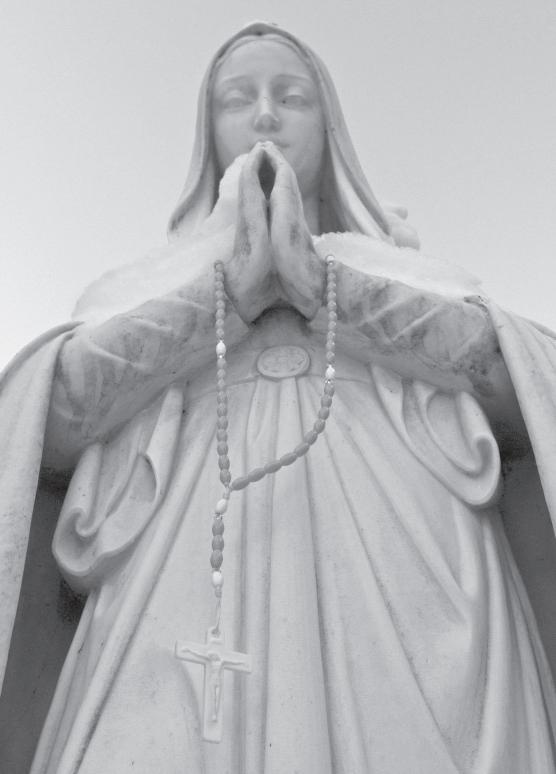
Urgent News - for all Catholic Youth
Connect with Catholic Youth Ministry Perth to engage in local events, Parish youth groups, social events, retreats and much more. Visit our website: www.cym.com.au, mailing list to receive a monthly e-newsletter, or facebook group Catholic Youth Ministry Perth. Volunteer with us to meet new people and share your skills with the Church. Feel free to visit us, or call 9422 7912.
Bible Teaching with a Difference
7.30pm at St Joachim’s Parish Hall, Shepparton Road, Victoria Park. Exciting revelation with meaningful applications that will change your life. Meetings incorporate a Novena to God the Father. Light refreshments will follow. Bring along your Bible, a notebook and a friend. Enq: Jan 9284 1662
Every Wednesday Night
Holy Hour for 2010 at Catholic Youth Ministry
5.30pm at The Catholic Pastoral Centre, 40A Mary Street, Highgate. Mass, followed by Holy Hour at 6.30pm, dinner afterwards for a $5 donation. Enq: www.cym.com.au or call 9422 7912.
Every Thursday Group 50 Charismatic Group
7.30pm at the Redemptorist Church 190 Vincent Street, North Perth. During these meetings messages from Lalith Pereira who gave the Four Step Retreat recently will be broadcast by satellite from Sri Lanka. The first of these will be 18 February. Other broadcasts will be on 11 and 25 March 8 and 22 April.
FIRST FRIDAY OF THE MONTH
Mass for Vocations
7pm at the Sisters of the Poor, 2 Rawlins Street, Glendalough. Celebrated by Fr Dough Harris, followed by Holy Hour and Benediction, refreshments will follow. Healing Mass
7pm at St Peter’s Church, 93 Wood St, Inglewood. Benediction, Praise and Worship followed by Mass with Fr Sam and Fr Joseph Tran as Celebrants, later fellowship. Enq: Priscilla 0433 457 352.

ACCOMMODATION
HOUSE TO LET Mt Hawthorn Area, unfurnished 3 x 1 duplex approx 3 mths. June to August/ Sept. $350pw. 0410 222 398
HOLIDAY ACCOMMODATION ESPERANCE 3 bedroom house f/furnished. Ph: 08 9076 5083.
GUADALUPE HILL TRIGG www.beachhouseperth.com Ph: 0400 292 100.
HOLIDAY RENTAL
SCARBOROUGH Self contained unit. Sleeps 6. Walk to beach. Ph 0402673409.
HOUSE TO SHARE for clean living male, $120p/w Riverton. Ph: 0449 651 697.
MATURE WOMAN SEEKS
SINGLE tenancy $150pw, S Suburbs. POL CL. 0448 938 348.
AVAILABLE IN NORTH PERTH AND NORTH BEACH. Rent negotiable according to circumstances. Enquiries to phone 08 94488109.
HEALTH
PSYCHOLOGY and PSYCHOTHERAPY
www.peterwatt.com.au Ph: 9203 5278.
ACHES & PAIN? Reflex Relax Massage by Indian masseur. Jai 0438 520 993.
MASSAGE BY QUAL LADY for neck, back & sciatic. 22 years’ experience. Ph 9444 4409
LAWNS
WRR LAWN MOWING and Weed Spraying. Get rid of Bindii & Jojo clovers. 9443 9243, or 0402 326 637, e-mail william.rao@iinet.net.au.


BOOK REPAIR SERVICE
New Book Binding, General Book Repairs, Rebinding, New Ribbons; Old Leather Bindings Restored.
Tydewi Bindery 9377 0005.
FURNITURE REMOVAL
ALL AREAS Mike Murphy
Ph: 0416 226 434.
COLLEGIUM SYMPHONIC
CHORUS Subscribe and save.
Conductor: Margaret Pride. Bach & Beyond, Mass in G, Cantata No 147, Brandenburg
Concerto No 3. Sunday, 16 May 2010 at 2pm, at St Joseph’s Church, 1 Salvado Rd, Subiaco. CSC Box Office: 9252 0002.
CATHOLICS CORNER Retailer of Catholic products specialising in gifts, cards and apparel for Baptism, Communion and Confirmation. Ph: 9456 1777. Shop 12, 64-66 Bannister Road, Canning Vale. Open Mon-Sat.
OTTIMO Convenient city location for books, cds/dvds, cards, candles, statues, Bibles, medals and much more. Shop 108, Trinity Arcade (Terrace level), 671 Hay Street, Perth. Ph: 9322 4520. Mon-Fri 9am-6pm.
RICH HARVEST YOUR
CHRISTIAN SHOP Looking for Bibles, CDs, books, cards, gifts, statues, Baptism/Communion apparel, religious vestments, etc? Visit us at 39 Hulme Court (off McCoy St), Myaree, Ph: 9329 9889 (after 10.30am Mon to Sat). We are here to serve.
TRADE SERVICES
BRENDON HANDYMAN SERVICES Home, building maintenance, repairs and renovations. NOR. Ph 0427 539 588.
PLASTERING homes and renovations. Phone Neil 9390 6333.
BRICK REPOINTING
Ph: Nigel 9242 2952.
PERROTT PAINTING Pty Ltd
For all your residential, commercial painting requirements.
Ph: Tom Perrott 9444 1200.
PICASSO PAINTING Top service.
Ph: 0419 915 836, fax 9345 0505.
MINI EXCAVATOR HIRE
Trenching and civil works. Daniel Mob: 0428 170 379.
SPIRITUAL INTEREST
ENNEAGRAM WORKSHOP
From a Christian perspective. Led by the upper Room team. The best way to understand others and ourselves. $120. 1 & 2 May, Rockingham Church Hall. Bookings/Enquiries 9593 4918.
SETTLEMENTS
ARE YOU BUYING OR SELL ING real estate or a business?
Why not ask Excel Settlements for a quote for your settlement. We offer reasonable fees, excellent service and no hidden costs. Ring Excel on 9481 4499 for a quote. Check our website on www.excelsettlements.com.
LADY SENIOR 80S SEEKS COM
PANIONSHIP 2 or 3 times per week for tea and coffee, chat for an hour or two in Woodlands. Offer $5. Ph 0418 841 757 afternoon.
BUSINESS OPPORTUNITY
Work from Home - P/T or F/T, 02 8230 0290 or visit www.dreamlife1.com.
KINLAR VESTMENTS Quality hand-made and decorated vestments: Albs, Stoles, Chasubles, altar linen, banners etc. 12 Favenc Way, Padbury. By appointment only. Ph: Vicki 9402 1318 or 0409 114 093.
21
22
23
24
WASHINGTON - With a reminder that “the wrong actions of some do not justify the vilification of all,” Archbishop Donald W Wuerl of Washington urged prayers during the Easter season both for victims of child sexual abuse and for faithful priests tainted by the actions of a few.
“Priests who harmed children violated the heart of their ministry and have harmed not only our young people and our community of faith, but also the vast majority of their brother priests who faithfully live out their promises to serve Christ and his people,” the Archbishop said in an op-ed piece published on 4 April in The Washington Post
He sounded a similar theme in his homilies during Holy Week and at Easter and in an Easter Monday letter to Catholics of the Washington Archdiocese.
Before a Good Friday service on 2 April at the Cathedral of St Matthew the Apostle, Archbishop Wuerl joined about 30 members of Voice of the Faithful who were conducting Stations of the Cross outside the Cathedral in a protest of clergy sex abuse of minors.
He also listened to comments by David Lorenz, an abuse victim from Covington, Ky, who lives in the Washington area and with whom he had met previously.
“While it was almost time to begin our ceremony at the Cathedral, I joined the people at the prayer gathering to show solidarity with victims of abuse and to highlight the Church’s ongoing concern, prayers and pastoral and spiritual ministry,” he said in the 5 April letter.
Archbishop Wuerl also outlined the ways in which the Catholic Church in the US has “dealt openly, effectively and decisively in rooting out perpetrators of sexual abuse” and said Pope Benedict XVI, as Pope and in his former role as head of the Vatican Congregation for the Doctrine of the Faith, helped greatly in that process.
“The majority of media coverage this past two weeks has been full of speculation, yet has omitted the tremendous work that he has done to bring healing, account-
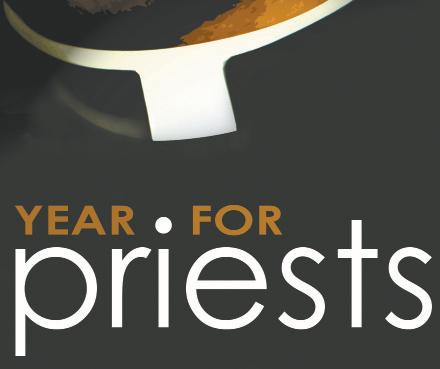
ability for those who harmed children, and protection for children over many years,” he wrote. Although the Archbishop did not mention any specifics, Pope Benedict has been widely criticised in the media for his handling of abuse complaints and abusive priests when he was Archbishop of Munich, Germany, and at the Vatican.
Archbishop Wuerl said child sexual abuse can be perpetrated by family members, teachers, youth leaders and others and much of the abuse by priests occurred “sometimes 30, 40 and even 50 years ago.”
“The impression is sometimes created that there is a disproportionate percentage of abusers in the priesthood and that the abuse continues today,” he said.
“Both assertions are not true.”
Archbishop Wuerl asked Catholics to “pray for our priests and at the same time encourage them and thank them for responding to God’s call, for their continuation of Christ’s ministry in the world, and for the demonstrated selfless service in meeting the sacramental, spiritual and pastoral needs of the faithful.”
“Belief sees beyond the failure of a few men and holds fast to the mystery of God’s goodness at work in this world in the priesthood, lived in so many, many good, effective, caring and faithful priests,” he added.
In the op-ed piece, headlined “Resurrection and redemption,” the Archbishop said the days of Holy Week and the Easter season “are a reminder that from pain and sorrow eventually come hope, redemption and new life.”
“As the Catholic Church continues to face the tragedy of clergy sexual abuse, we must pray for the victims, recommit to doing all that we can to keep children safe, and remember and pray for the priests who every day faithfully live out the deep love that Christ has for all of us,” he added.
Continued from Page 8
About one in six child molesters are other children, while most of the offenders are male. According to a major 2004 study commissioned by the US Department of Education, nearly 10 per cent of US Public school students have been targeted with unwanted sexual attention by school employees. The author of the study concluded that the scope of the school sex problem appears to far exceed the clergy abuse scandal in the Roman Catholic Church and concluded in an interview with Education Week that the physical abuse of students in schools is 100 times more likely to occur than abuse by priests.
Meanwhile, he added, the Church is conscious of the problem. The Code of Canon Law says in Canon 1395.2: “The cleric who commits any offence against the sixth precept of the Decalogue, if the offence was committed with violence or threats, or publicly or with a minor who is under 18 years must be punished with just punishments, not excluding expulsion from clerical state”.
The Weekend Australian Magazine of 3-4 April was one of the few voices questioning the hysteria of a global media onslaught against the Church and Pope Benedict over the issue of abuse.
“… when Vatican officials express indignation that their Church is being singled out as a corrupt institution when paedophilia and under-age sex are part of a larger social problem, they may have
a point,” it noted. “A large scale survey by Dr Thomas Plante of Stanford University suggests that 2-5 per cent of priests have had sexual experience with a minor, far lower than the figure for the general adult male population, estimated at 8 per cent. And the Catholic Church may not be as bad as others: in a survey in the mid 1990s, 14 per cent of Southern Baptist ministers admitted in engaging in “inappropriate sexual behaviour.” “Nor is the sexual abuse problem just a problem of the Christian Church: the sleeping giant may be Islam, with reports leaking out of systematic sexual abuse of boys in Pakistani madrassas.”
However, as a barrage of studies show, the likely problem is not any particular faith or denomination, but a global disease cutting across borders and governments which sees children everywhere being preyed on by the very individuals who are meant to protect them.
Surprisingly, one can read the statistics as showing that it’s the Catholic Church’s own powerful ethical system that is the most effective and which has offered the most protection to children – hence the shock, pain and justified anger when Catholics or their representatives transgress and compound the evil of it all by covering it up.
The statistics also appear to indicate that one of the safest - if not the safest - groups of individuals in the world for children to be around are Roman Catholic priests.
Benedict has been a rigorous leader on sex abuse handling: Lombardi
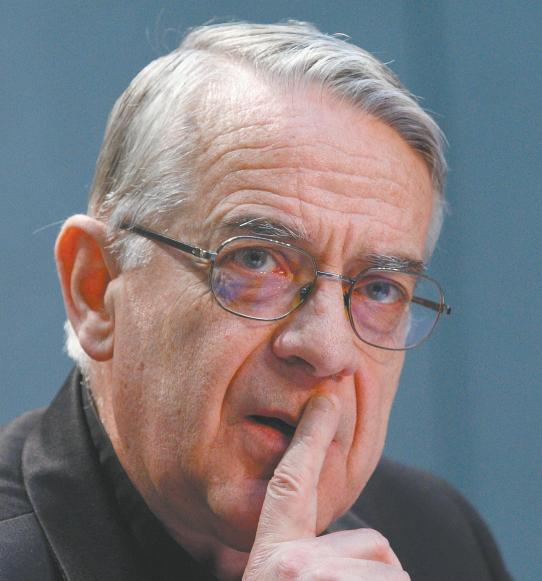
 BY JOHN T HAVIS Catholic News Service
BY JOHN T HAVIS Catholic News Service
VATICAN CITY - The Vatican spokesman strongly defended Pope Benedict XVI as a credible leader on the issue of priestly sex abuse, saying the Pope’s respect for truth and transparency stand against the “criticism and unfounded insinuations” of recent weeks.
The spokesman, Jesuit Fr Federico Lombardi, said in a lengthy commentary on 9 April that the recent disclosures of past cases of abuse of minors by priests had demonstrated that the wounds in the Church run deep, and require greater pastoral attention.
But he said the Church was taking the correct approach by reaching out to victims, strengthening its own procedures against offenders, encouraging cooperation with civil authorities and improving the screening of priesthood candidates.
Fr Lombardi criticised the media for treating sexual abuse as if it were only a Church problem. The crisis, he said, is extensive and goes well beyond the boundaries of the Catholic clergy.
Responding to widespread criticism of the Pope and the Vatican for allegedly failing to act more decisively against priest abusers, Fr Lombardi said the Church’s current policies of transparency and firmness reflected the Pope’s own determination to address the problem.
“Pope Benedict XVI, a coherent guide along the path of rigour and truth, merits all respect and support,” Fr Lombardi said.
“He is a pastor well capable of facing - with great rectitude and confidence - this difficult time in which there is no lack of criticism and unfounded insinuations,” he said.
Church leaders can learn from Pope Benedict “the constancy necessary to grow in truth and transparency” and to respond patiently to “the slow and gradual release of partial or presumed ‘revelations’ which seek to undermine his credibility,” he said.
The spokesman added that this same “patient and solid love of truth” should be shown not only by everyone in the Church but also by those in society who communicate and write, “if we want to serve and not confuse our contemporaries.”
In response to the barrage of media criticism of the Pope and his aides, Fr Lombardi and other Vatican officials have pointed out that even as a cardinal, Pope Benedict pushed hard for stricter measures for prosecuting and laicising priest abusers. As Pope, he has repeatedly condemned such abuse as a terrible sin and crime, and has met with sex abuse victims in the United States and Australia.
Fr Lombardi said the recent events have revealed, in a striking manner, that although most of these sex abuse cases go back decades, the “inner wounds” are evidently still
open. “Many victims do not seek financial compensation but inner assistance, a judgement on their painful individual experiences. There is something that we have yet to fully understand; perhaps we need a more profound experience of events that have had such a negative impact on the lives of individuals, of the Church and of society,” he said.
While the cases may be old and the number of new allegations diminishing, he said, “for many people the road to profound healing is only now beginning, and for others it has yet to start.” The spokesman reiterated Pope Benedict’s willingness to hold new meetings with victims of abuse. And he said certain Bishops’ conferences had rightly established forums for listening to abuse victims.
“Alongside concern for victims we must continue to implement, decisively and truthfully, the correct procedures for the canonical judgement of the guilty, and for collaborating with the civil authorities in matters concerning their judicial and penal competencies, taking the specific norms and situations of the various countries into account,” he said.
“Only in this way can we hope effectively to rebuild a climate of justice and complete trust in the ecclesiastical institution,” he said.
Fr Lombardi said the question of maturity in sexual matters was important when it comes to accepting candidates for the priesthood. But he said the issue touches on a wider problem in society, which has been affected by a “sexual revolution” and a process of general secularisation.
“In the final analysis, this means rediscovering and reaffirming the sense and importance of sexuality, chastity and emotional relationships in today’s world, and doing so in concrete, not just verbal or abstract, terms,” he said.He faulted the media for failing to adequately report the extent of the sexual abuse problem, and for failing to make it clear that the Church was dealing with a problem shared by many institutions.
For example, he said, a recent document on mistreatment of children in the United States reported that in 2008, there were more than 62,000 perpetrators of sexual abuse against minors; of that number, he said, the proportion of Catholic priests was so small as not to be taken into consideration as a group.
A front-page commentary the same day in the Vatican newspaper, L’Osservatore Romano, praised Pope Benedict as a “courageous witness of truth” even when it came to scandals of the Church’s own members.
“Whoever can set aside prejudice is impressed by the strength of this Pope who ... does not fear the outrage and derision of the world” and “the truth at any cost, even if it hurts, even if it burns the soul,” said the commentary, written by Italian Archbishop Gualtiero Bassetti of Perugia.